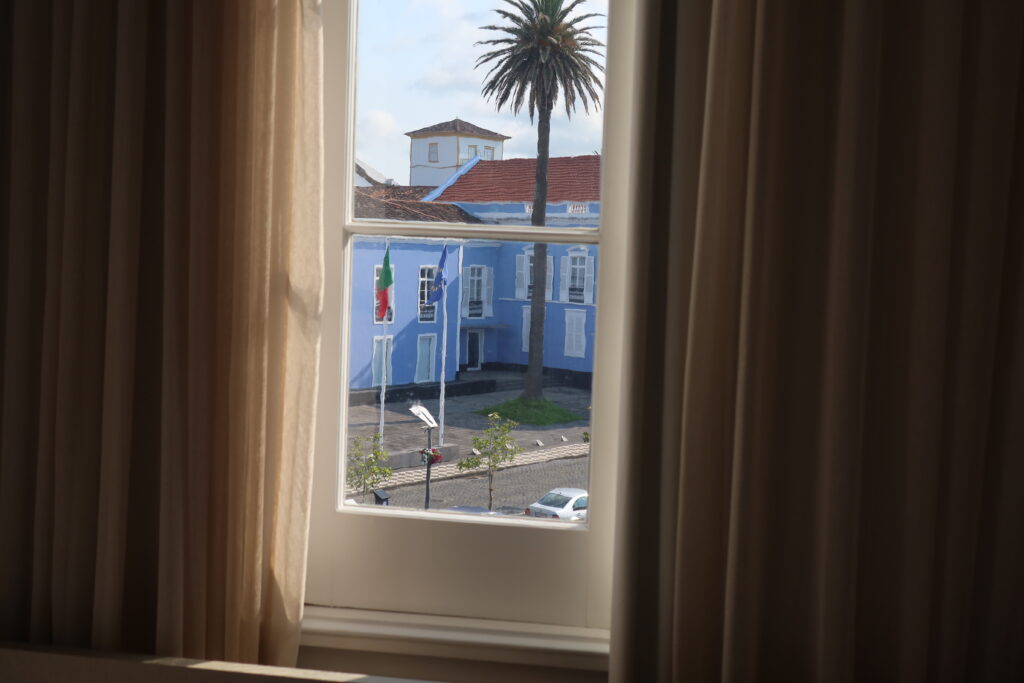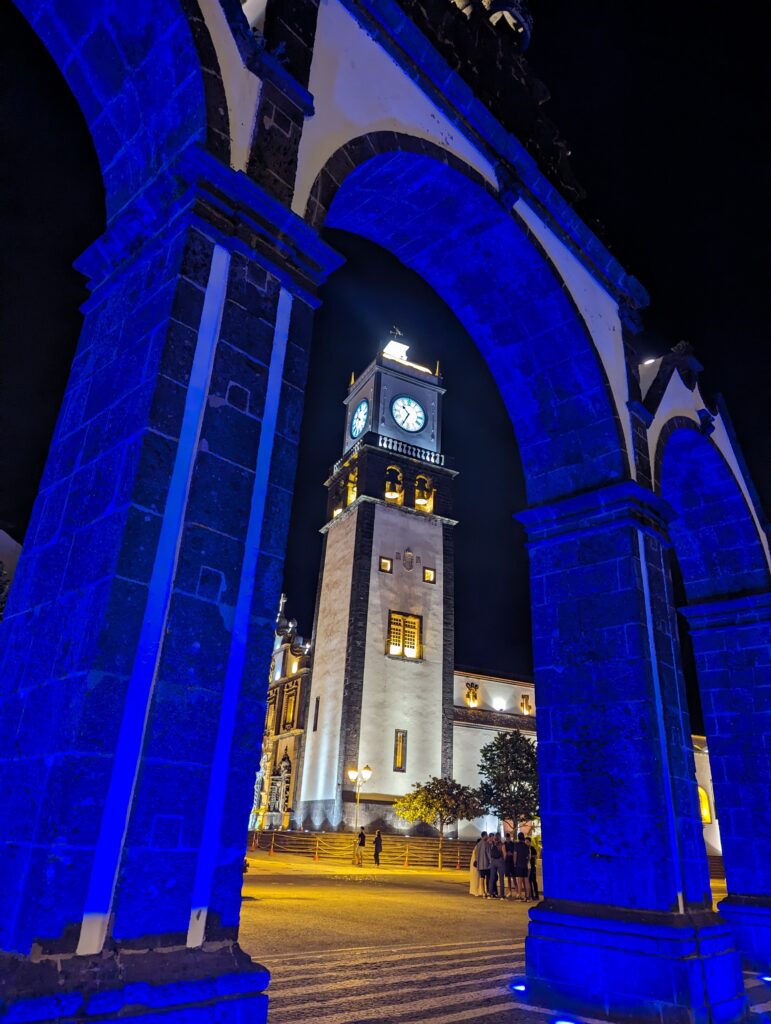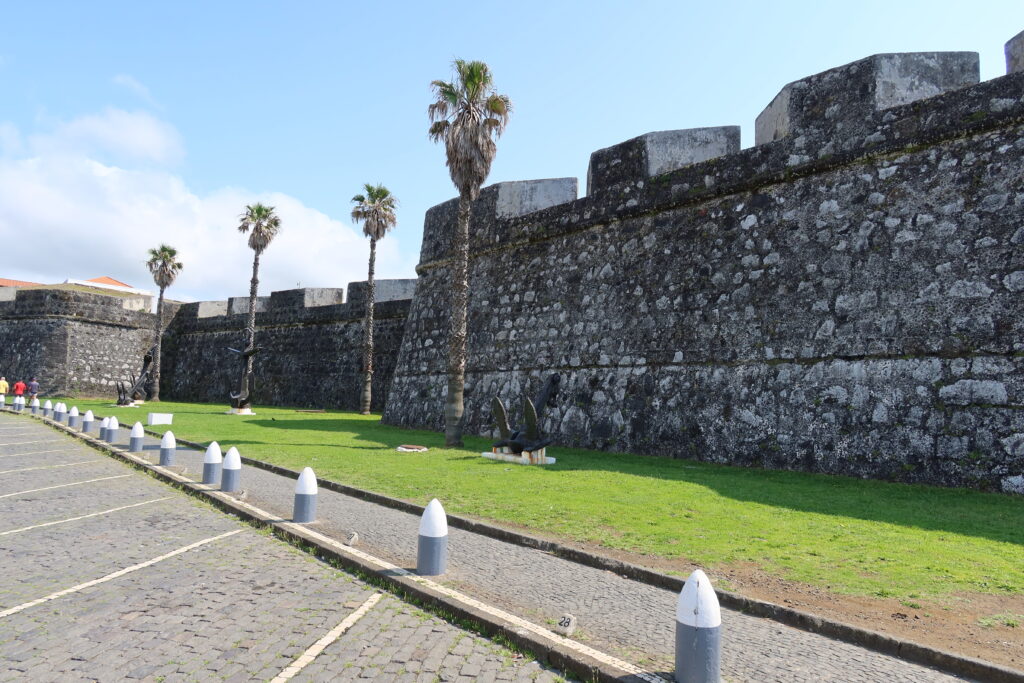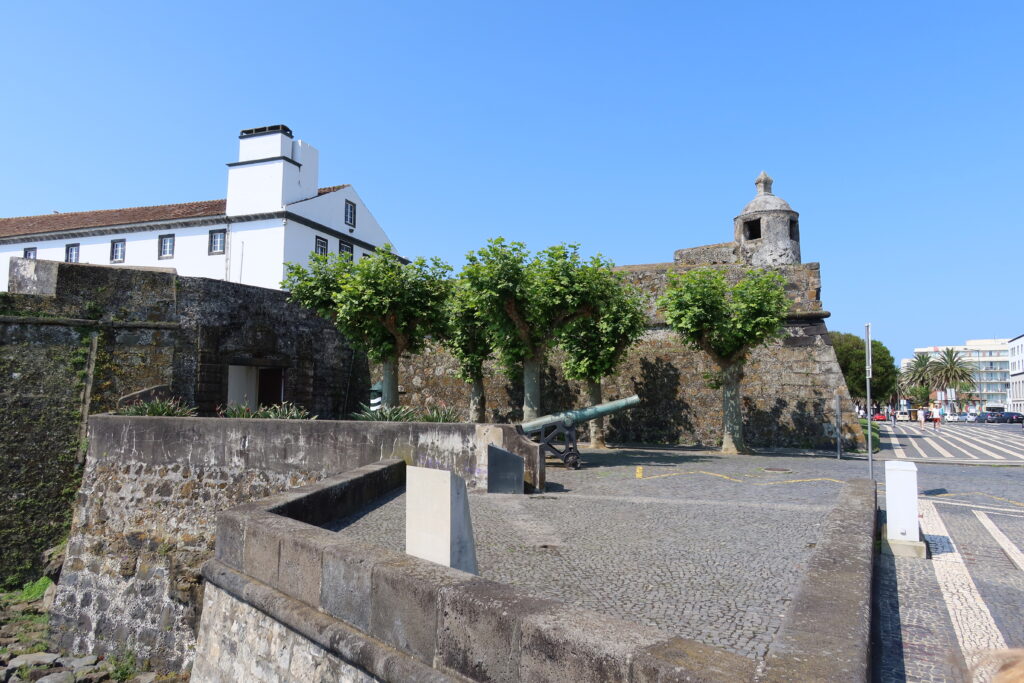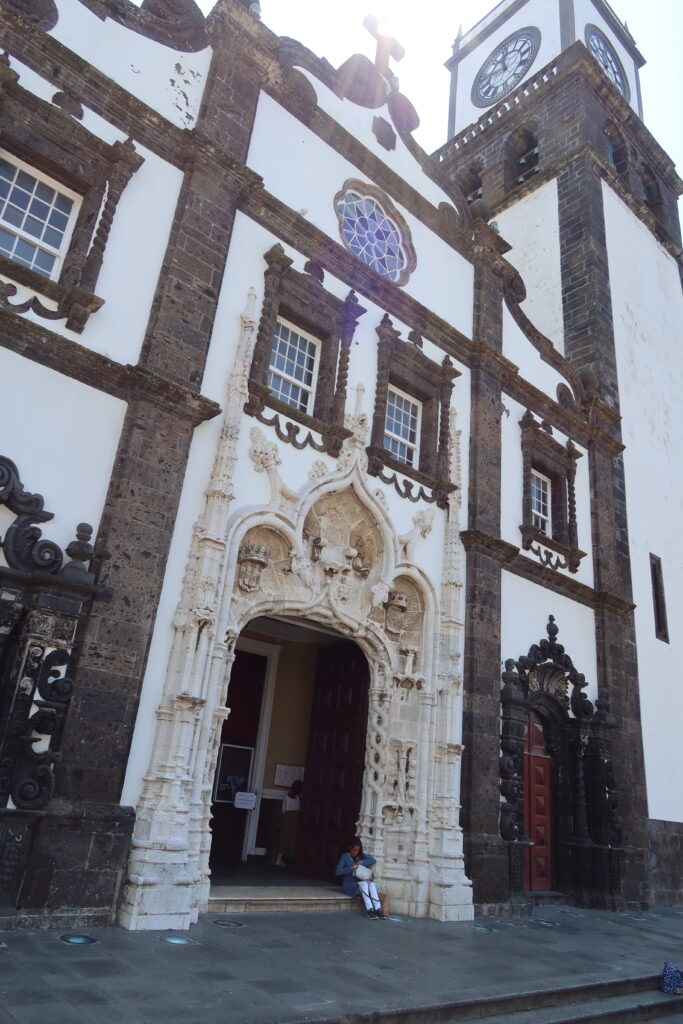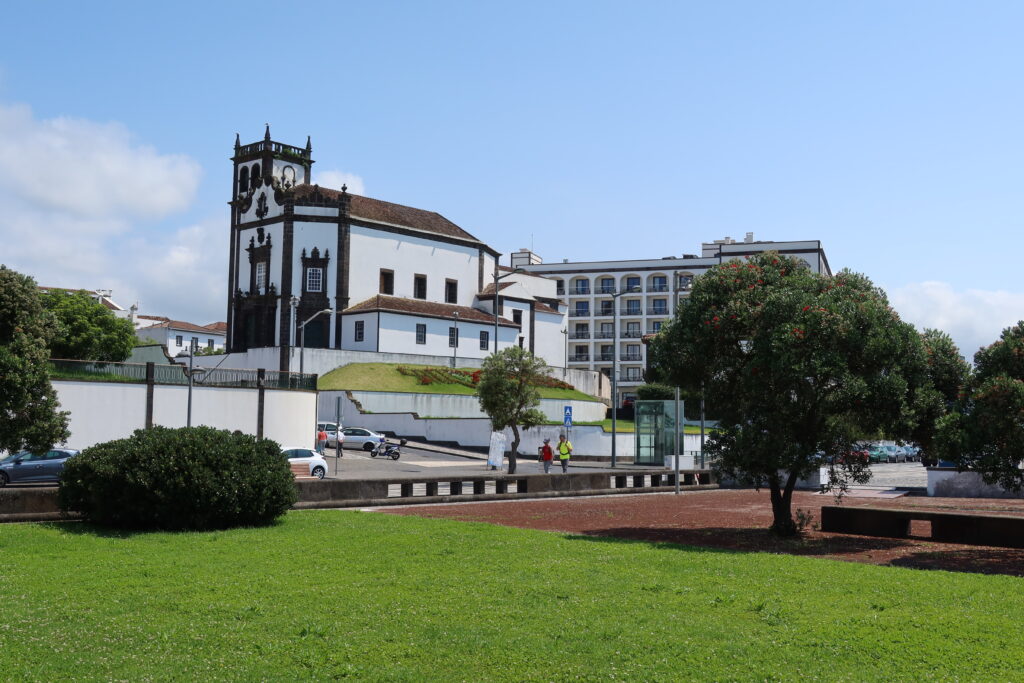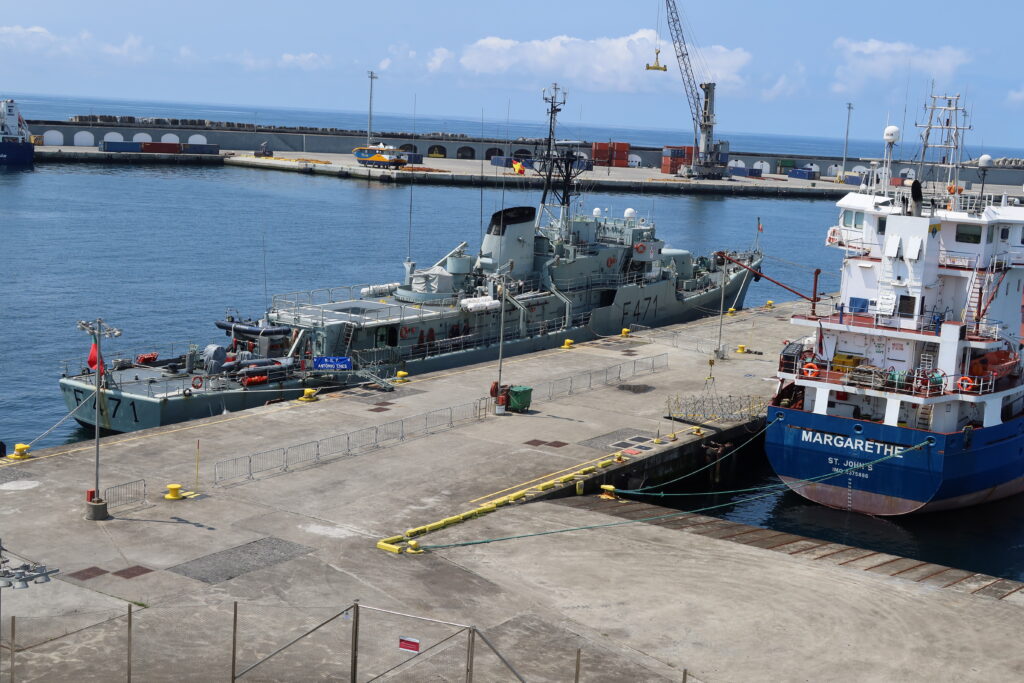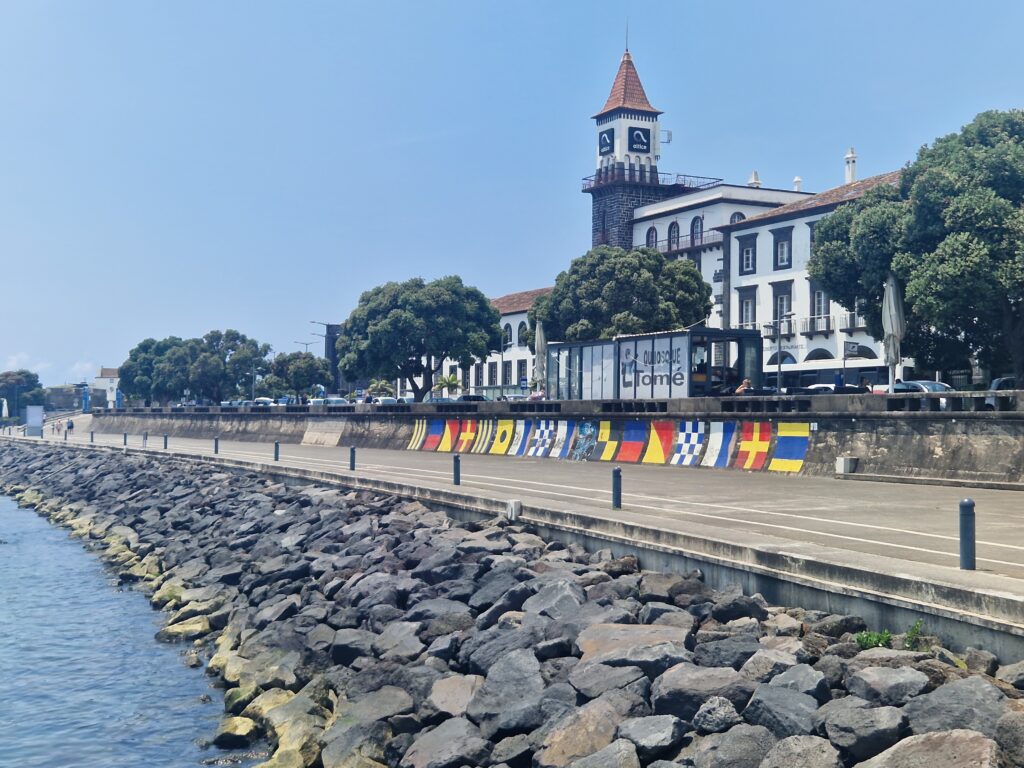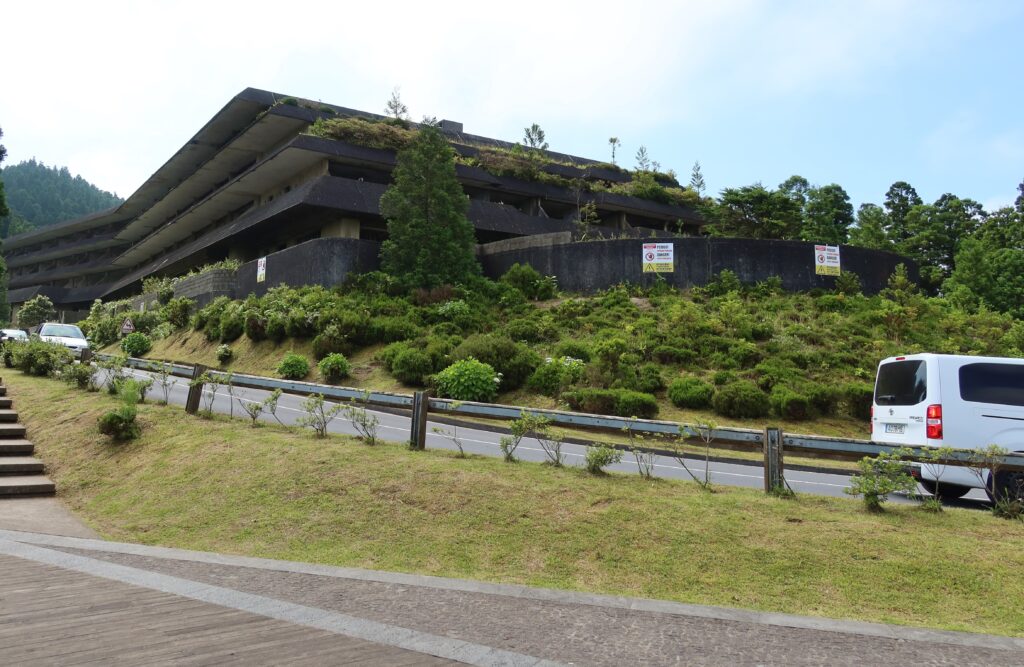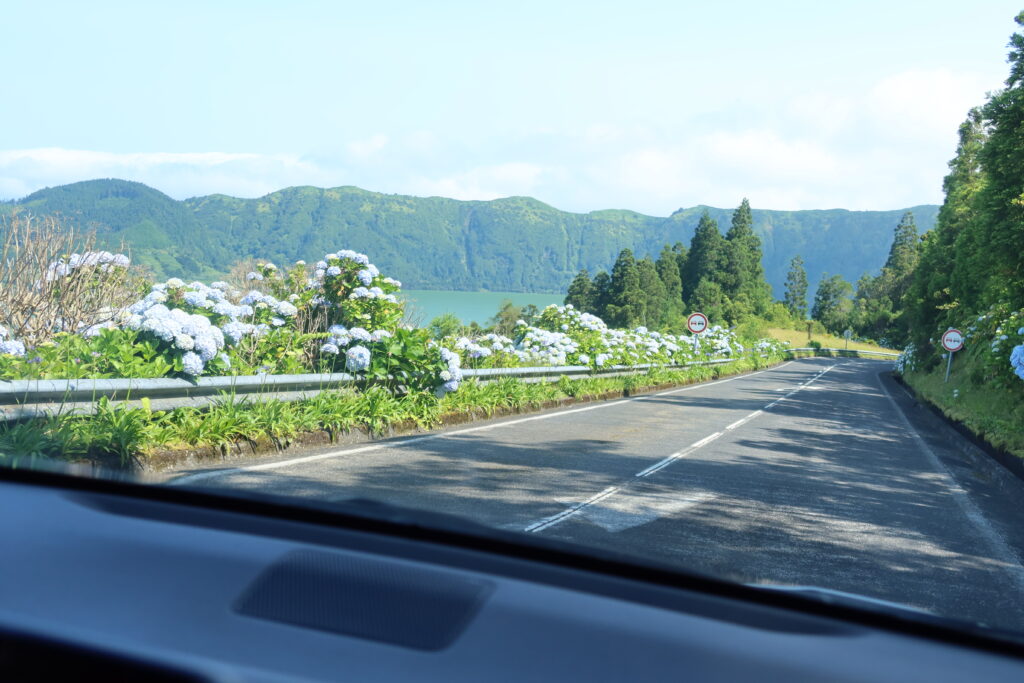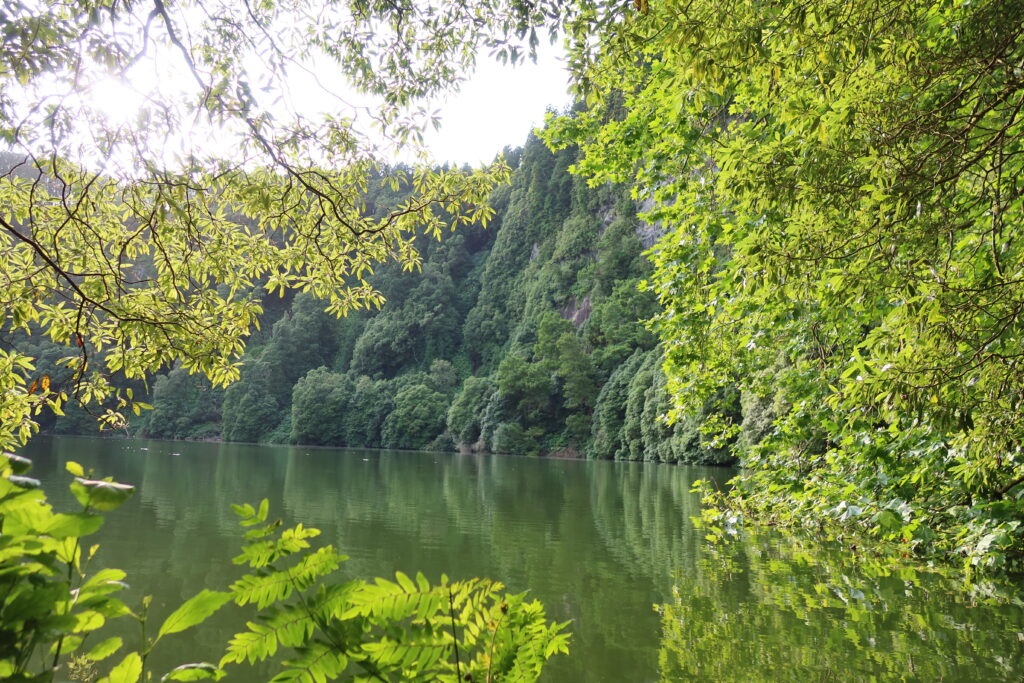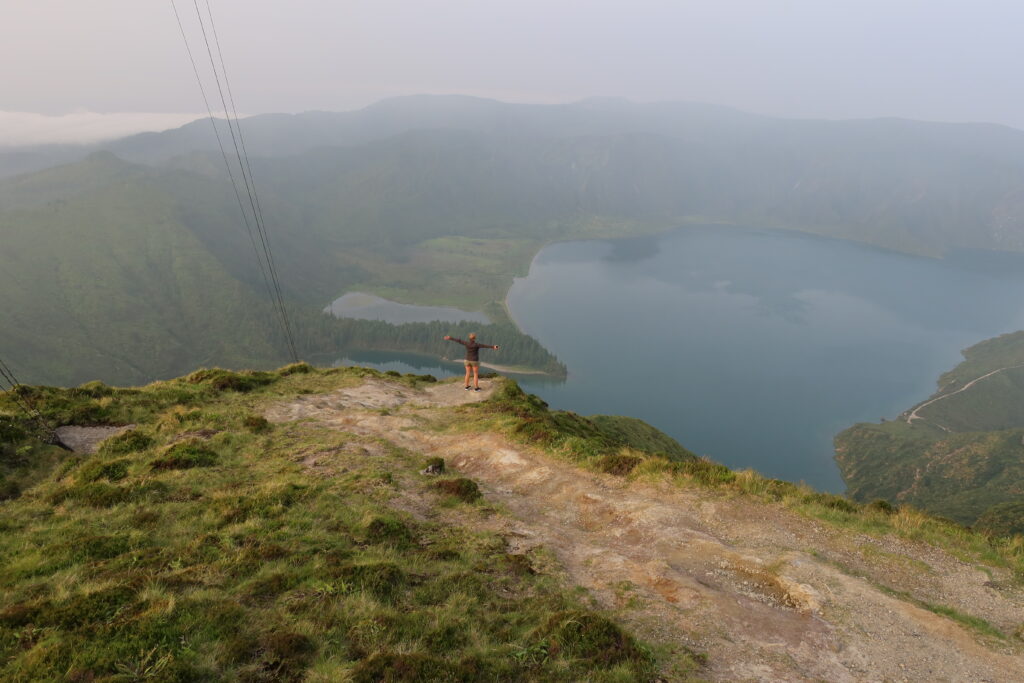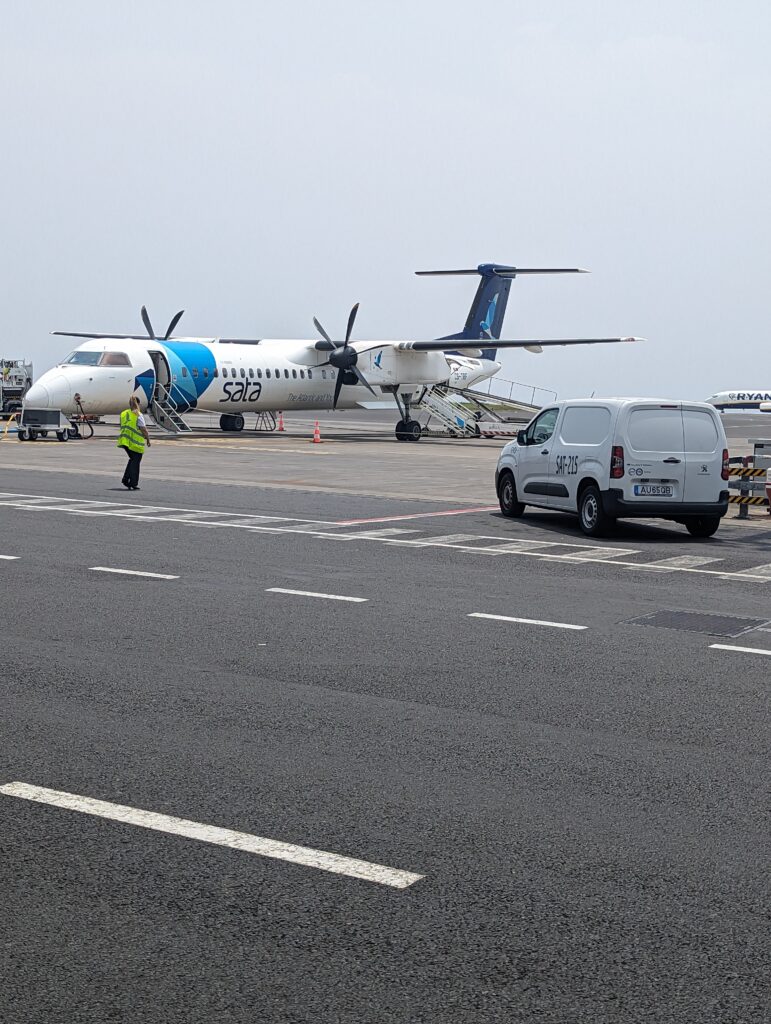Sao Miguel, Azores – June 2023 (by Luke, June/July 2024)
Sao Miguel is both the largest and most volcanically active of the nine islands that make up the Azores. The capital of Sao Miguel is Ponta Delgada. This is home to half the people that live on the island and is the economic capital of the Azores.
The island is made up of 6 volcanic zones that formed in the last 3-4 million years. Sao Miguel didn’t take its current shape until around 50,000 years ago when land forming lava from the volcanic complex of Picos joined the eastern and western volcanic massifs. Three of the volcanoes on the island are active (but dormant). These are Sete Cidades, Fogo and Furnas, and there are also the active volcanic faults of Picos and Congro.
The geology of Sao Miguel (and the Azores in general) has been widely studied. There is a wide range of information available online on it from a lot of people who know much more about it than I do. My interest is purely from being a geek but I was really excited to be able to see as many of these volcanic features as possible up close and personal!
day 1 – Manchester to Lisbon to Sao Miguel, Azores (24/06/23)
Starting a holiday relaxed is always the best so we stayed at a hotel at Manchester airport the night before the flights. This should have avoided an early start to travel to the airport for our flight the next morning. A great idea in theory but in reality we were both awake by about 0430. We spent the time before the flight planning where we wanted to go and how best to do it!
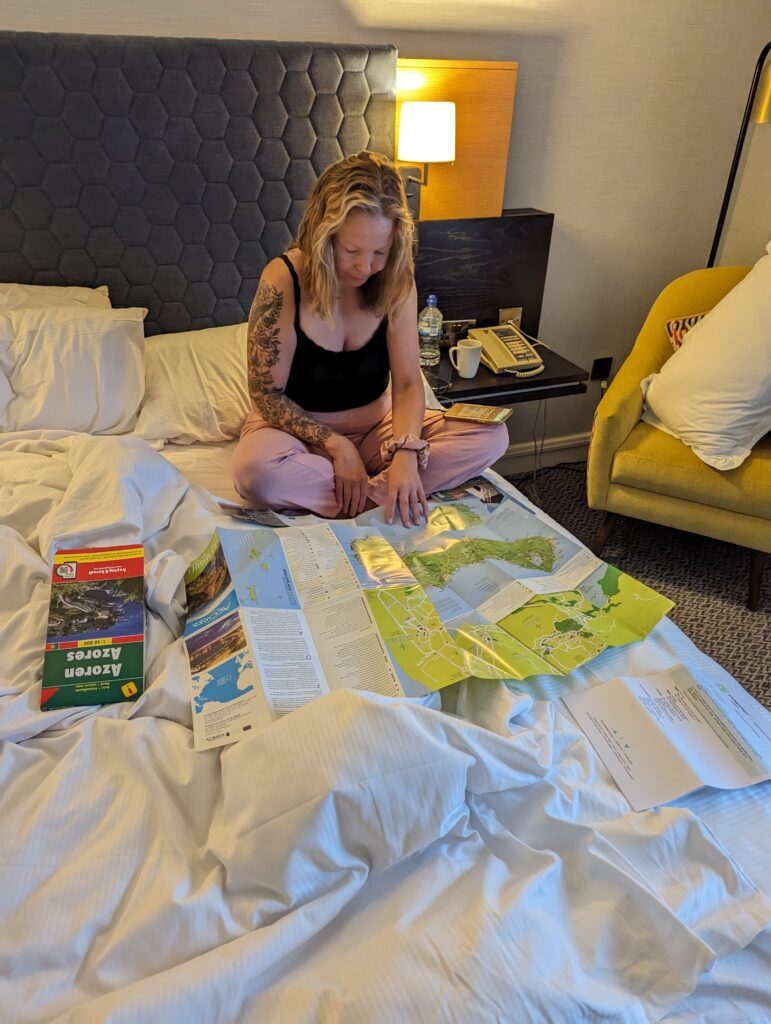
The flight was pretty uneventful. Manchester to Lisbon, a couple of hours in Lisbon airport and then the connecting flight to Aeroporto João Paulo II, Ponta Delgada, Sao Miguel. We didn’t see any of the island from the air until our final descent.
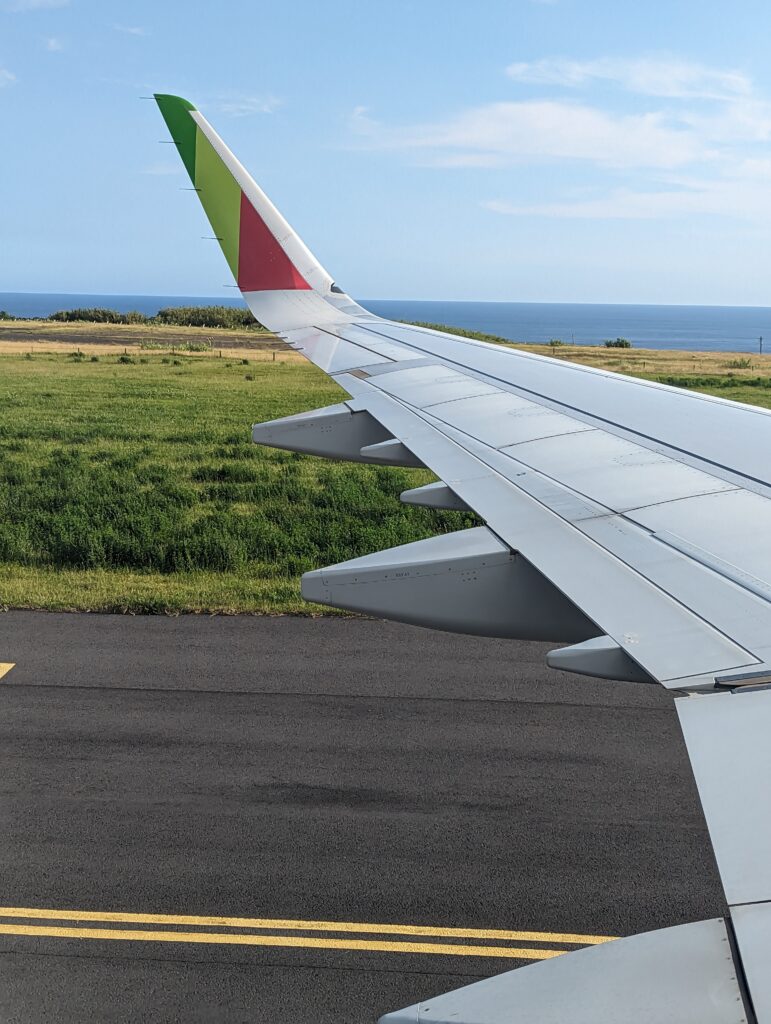
We were met at the airport for our short transfer into Ponta Delgada. The journey actually took a bit longer than it should have due to an assortment of road closures and diversions so we got a good look at the city. The city streets were really quite narrow, to the extent that our driver ended up scraping wheels on kerbs a few times. This filled Gill with joy knowing that we had a hire car booked in a couple of days’ time!!
After a few detours we made it to the B&B that we’d be staying in, ‘Casa das Palmeiras – Charming House’. This stunning three storey building had massive windows and really high ceilings. There were lots of stairs to get to our room (this became a theme for the holiday) but it was worth it. The room looked out at the Conceição Palace and a pretty garden (Jardim Padre Sena Freitas).
We unpacked our cases and then headed out for dinner – walking down towards the sea to Cais da Sardinha. Perhaps unsurprisingly for a restaurant whose names translates to ‘Sardine Pier’ and was on the waterfront, the seafood here was amazing. We ate dinner, watched the sunset over the ocean and enjoyed a bottle of Azorean wine.
After dinner we went for a walk to see some of Ponta Delgada at night. The highlights of this being the city gates (Portas da Cidade) and the iconic Igreja Matriz de São Sebastião. This church was so intricate (which we saw more in daylight the following day).
Something that we noticed in a couple of places in Ponta Delgada this evening were long queues of people. There were far more than you’d expect for such a small city. They were so noteworthy that we asked a taxi driver the next day. He explained that they would have been queuing for ice cream and that ‘Azorean people love ice cream’!!
day 2 – Ponta Delgada, Sao Miguel, Azores
Today was intentionally left as free as possible for us to discover Ponta Delgada – we really did! We had breakfast sat outside then set off for our first destination, Gruta do Carvão. These lava tubes are on the outskirts of the city – it was a nice to walk to get to them. Unfortunately there were no available group tour slots available this morning so we booked for the afternoon and headed back down the hill to see some sights.
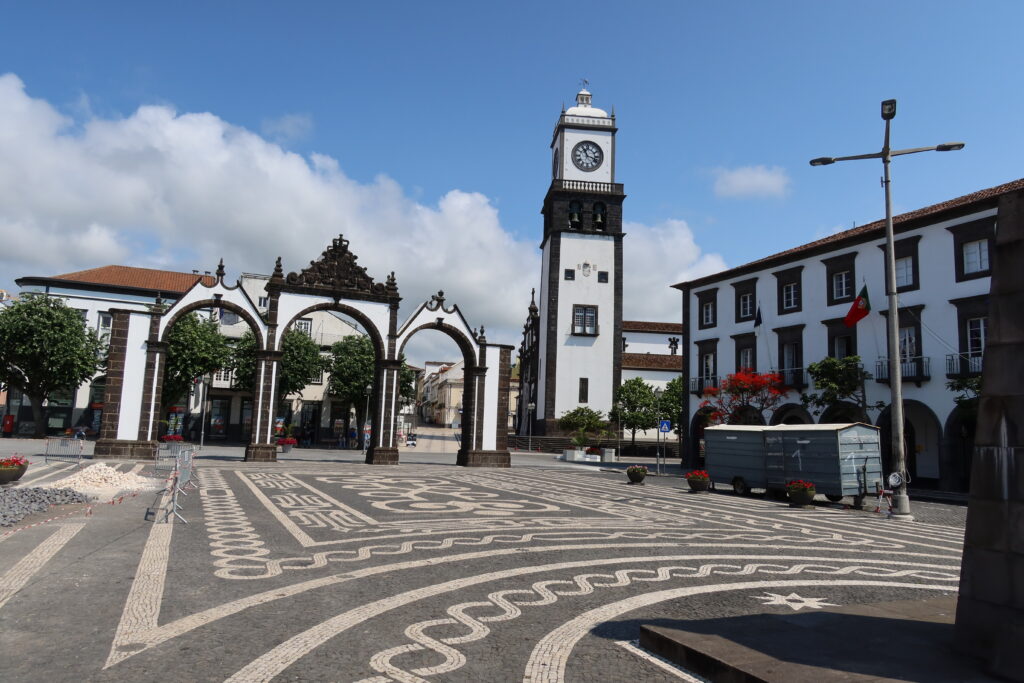
We stopped for lunch at the marina then got a taxi back up to the Gruta. The short guided tour of the lava tubes was well worth doing. Being underground was like being in a different world and it was nice to be in the cool for a while!
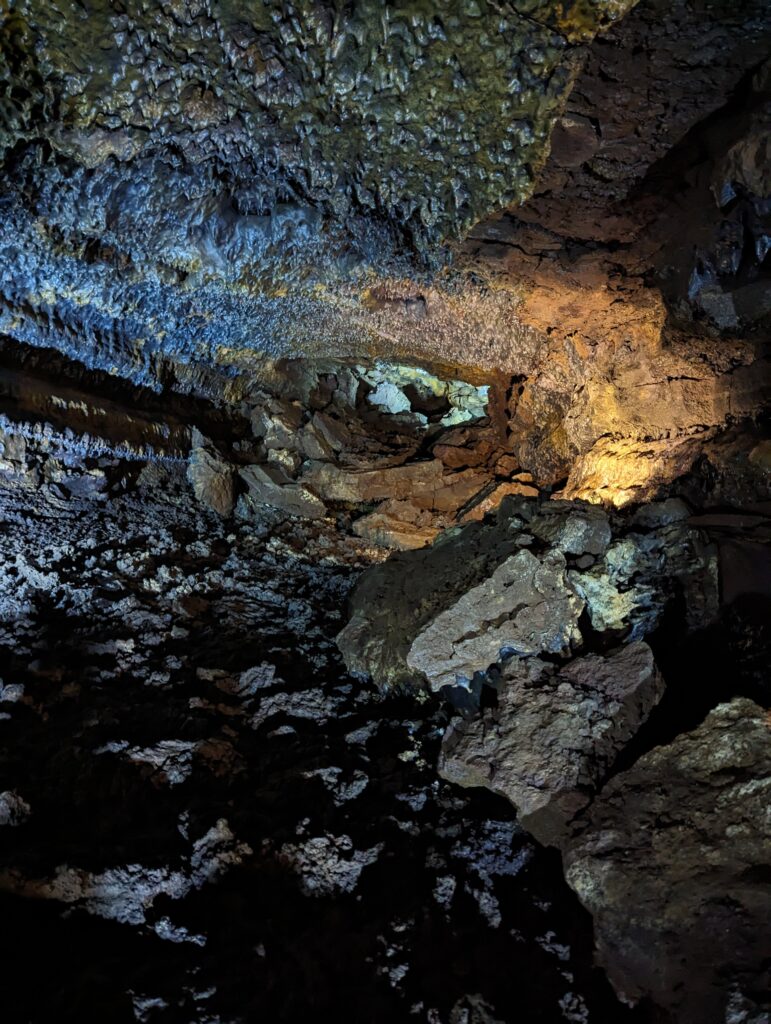
The walk back down to our hotel was filled with spotting quirky buildings and decorative paving. Ponta Delagado had a real selection of different styles of paving, unlike anything that I remember having ever seen before. (100% aware how exciting that sentence sounds but they were rather special as you can see below!)
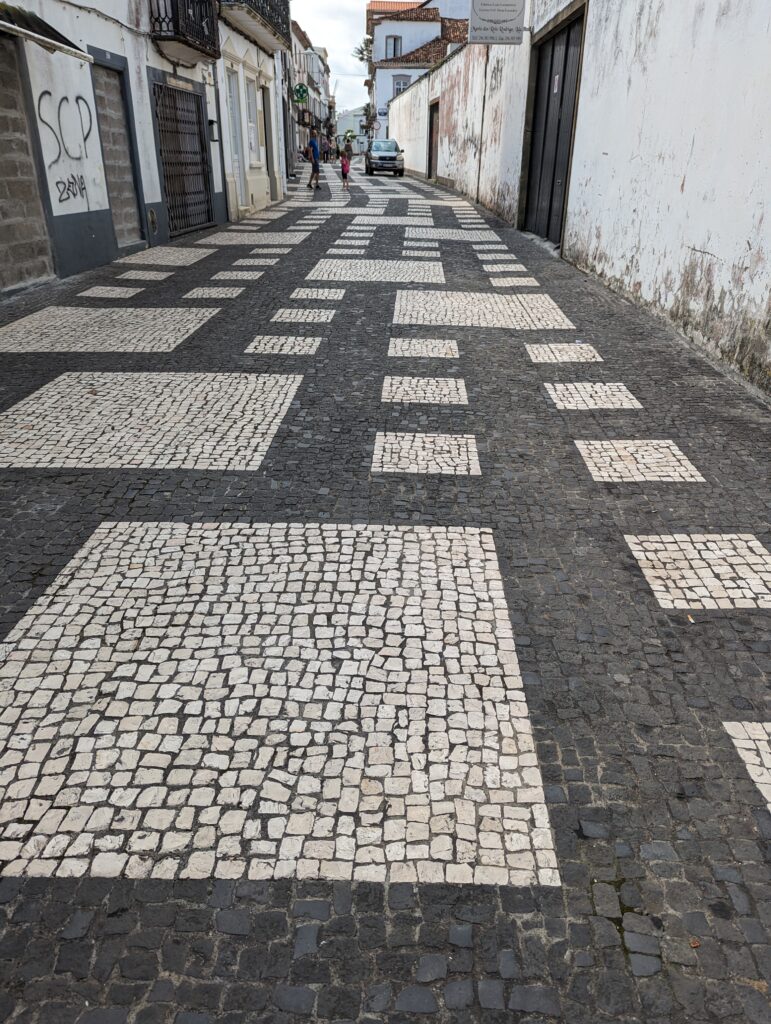
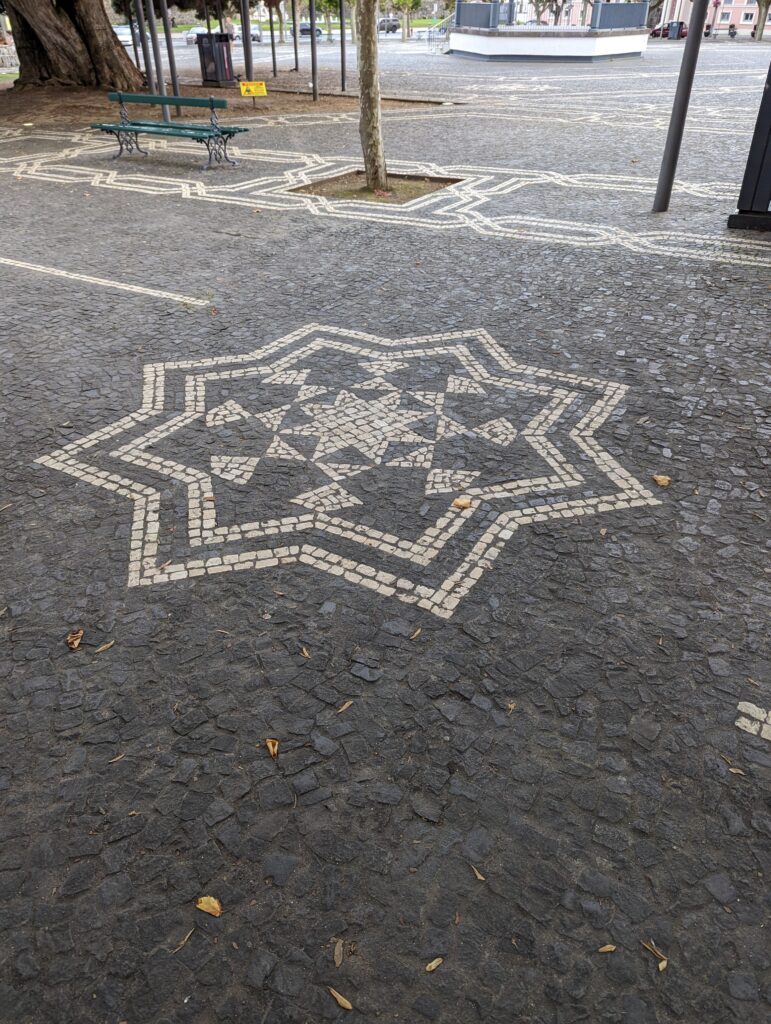
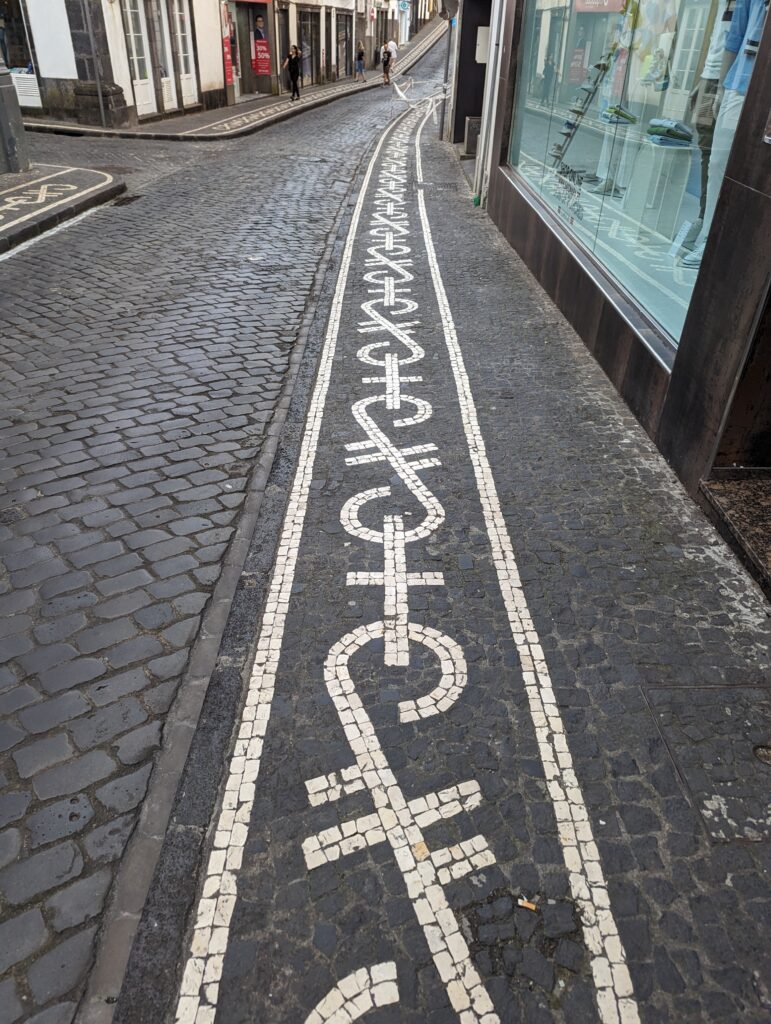
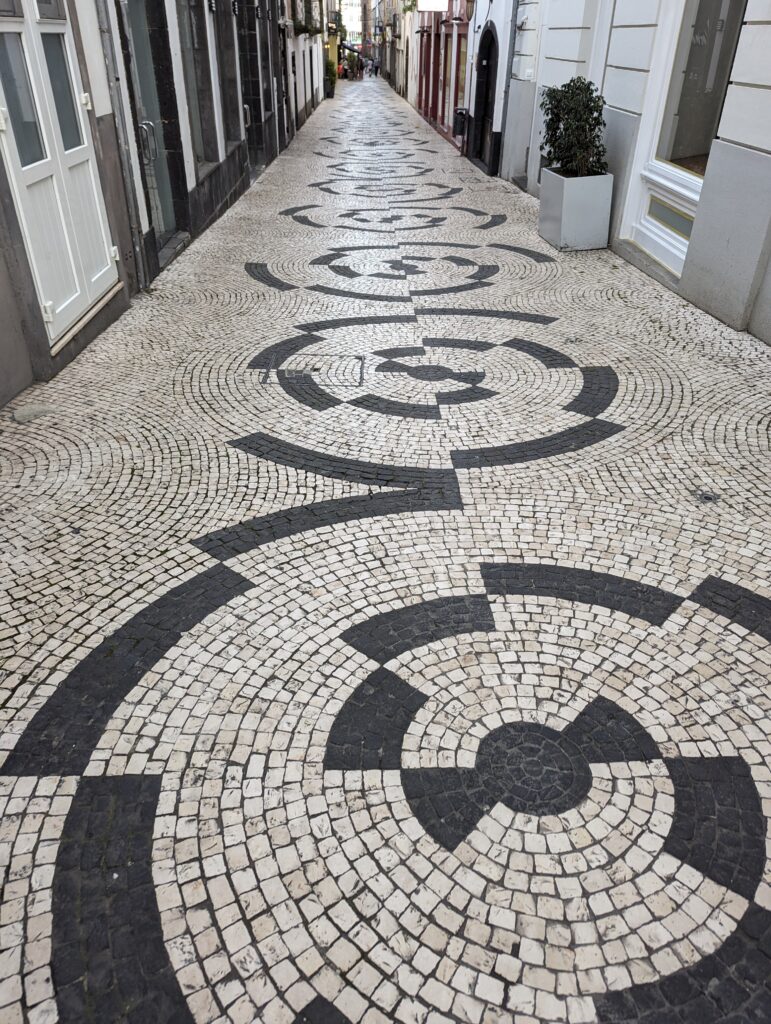
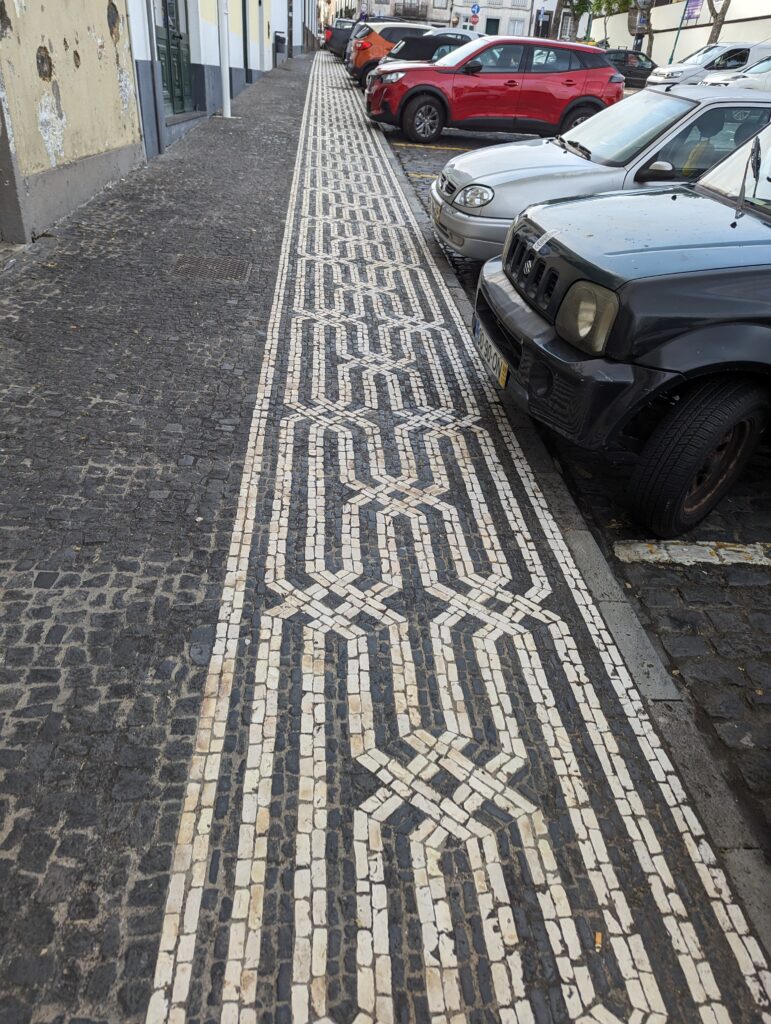
After getting ready we set off for Taberna na Boavista for dinner. This was such a quirky, cool place. We were both initially disappointed not to sit in the really nice garden but instead of waiting for a table to come available we sat at a large table with strangers. This is not something that I’d ever really done before. All the others around the table were nice and it was fun to swap stories. I think it helped us all get excited about places that we were yet to see in the Azores. We ate loads of amazing food and tried almost all of the cocktails before heading back to the B&B.
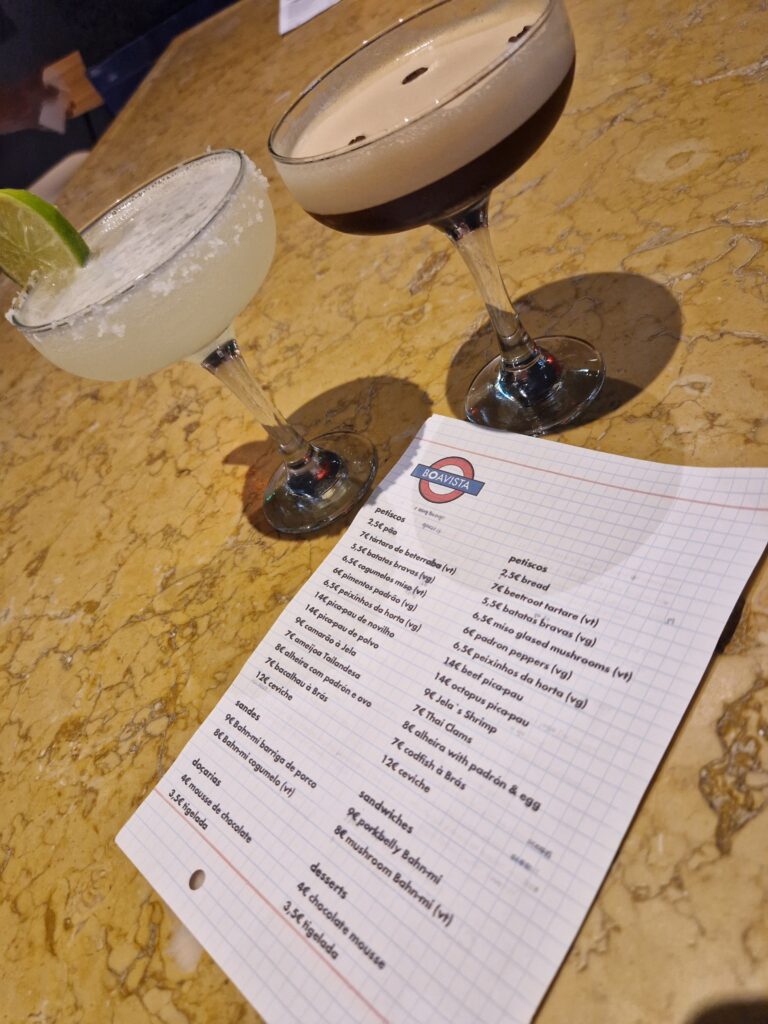
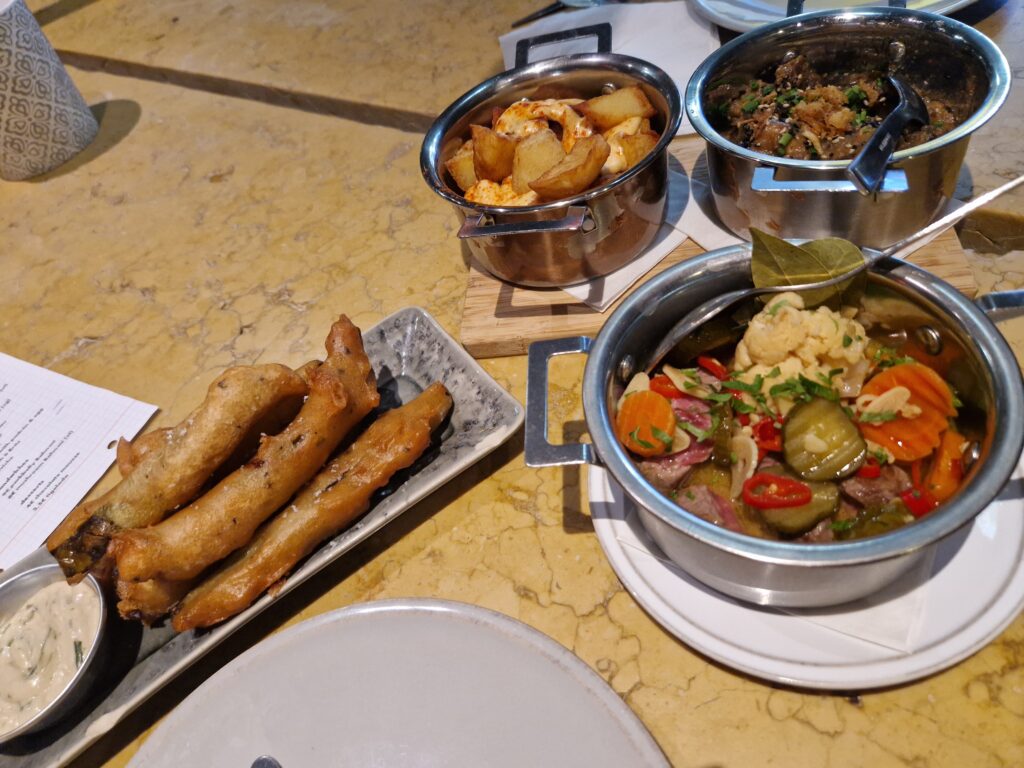
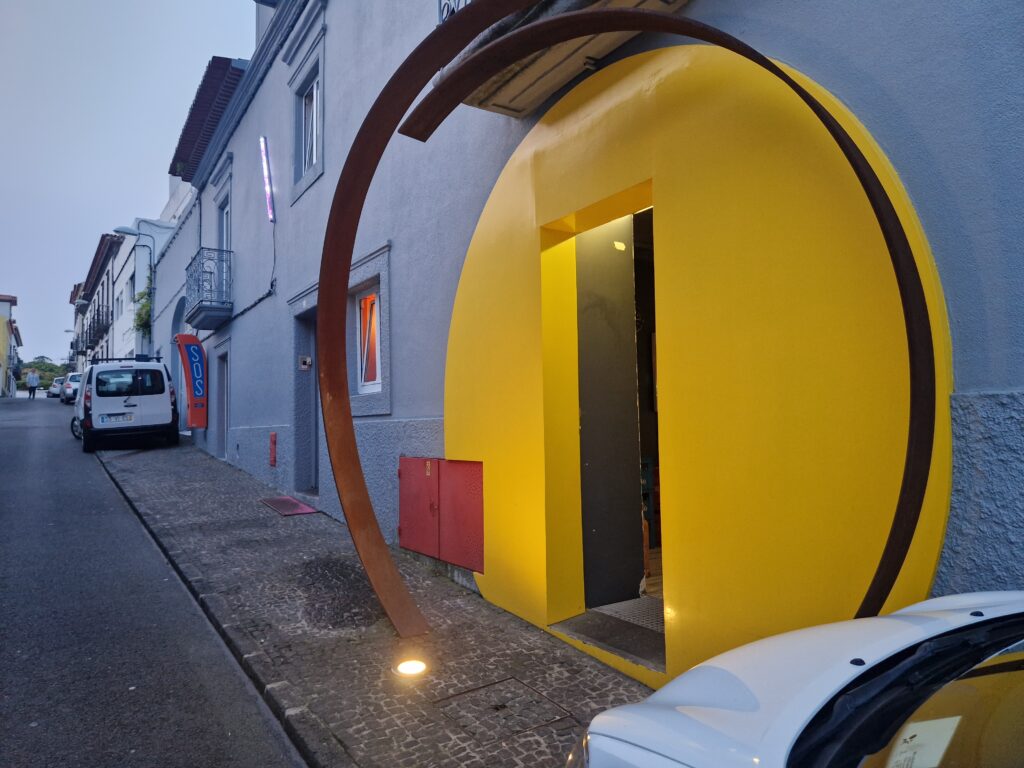
day 3 – the northwest
After breakfast we walked down to the marina to pick up our hire car. This wasn’t quite as smooth a process as it could have been because the car wasn’t ready. After a bit of a frustrating wait it finally arrived. Gill got her negotiating head on and used the delay in our favour. Because it caused us to miss out on part of what we were due to do that morning she agreed that the hire company would absorb the cost of filling the car up when it was dehired.
We picked the car up just off a relatively main road so there weren’t the narrow streets of Ponta Delgada to deal with immediately. We drove along hydrangea lined roads across the island towards Sete Cidades. It’s quite easy to gloss over views seen from in a car but what ‘we’ (maybe the one of us who wasn’t driving saw more!) saw as we crossed the island was stunning. The different colours of the hydrangeas, rolling hills, distant sea views, forests…wow!
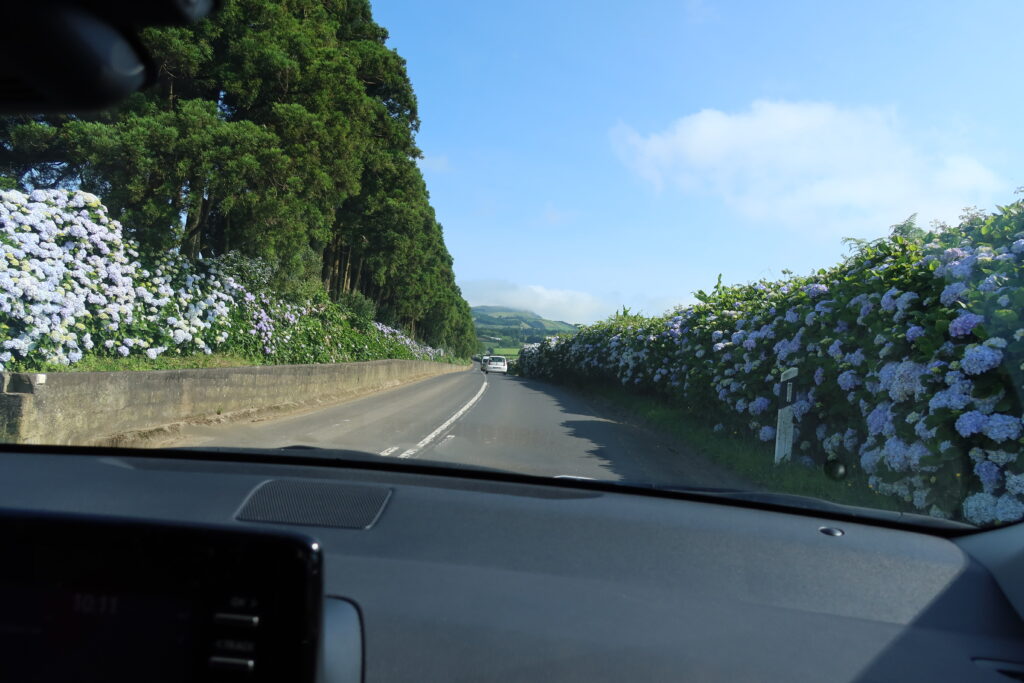
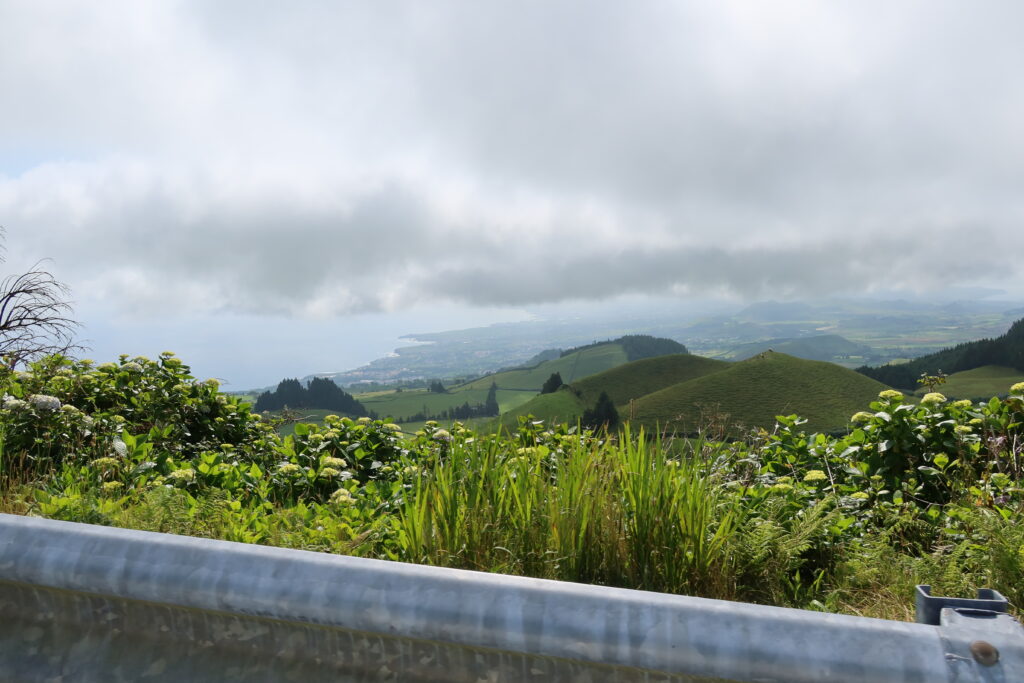
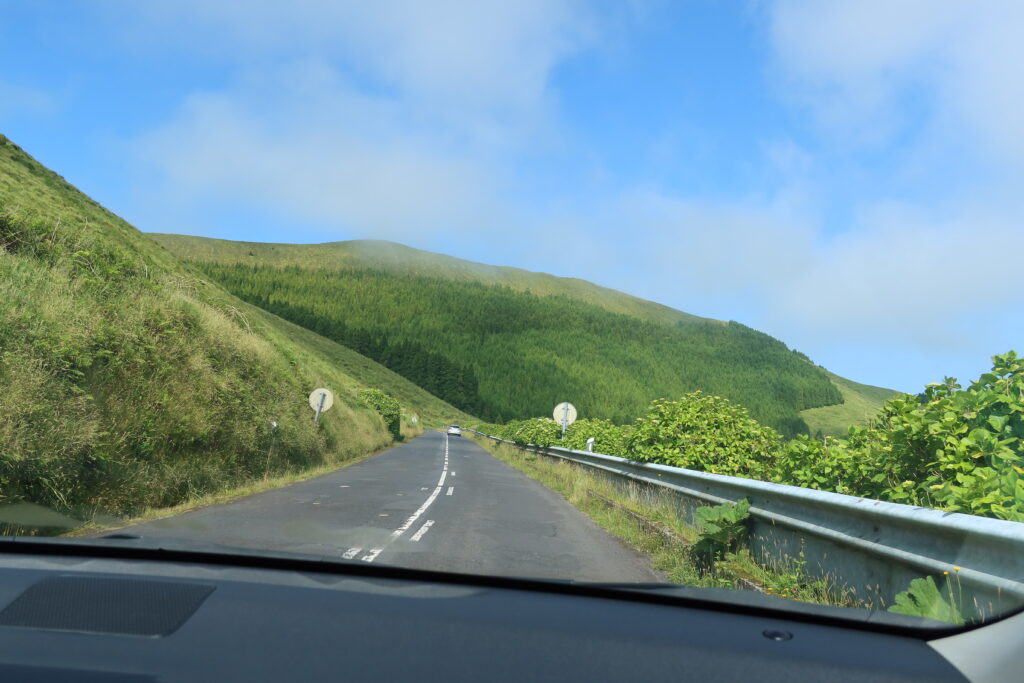
Sete Cidades (Seven Cities) is the name of the wider area, and the lake filled caldera, and also the town inside the crater so there is potential for a bit of confusion. Luckily we knew exactly where we needed to go (and the road signs were easy to follow too). I had really good mobile data coverage across the whole of the island which meant we had the backup of Google Maps.
We passed a few viewpoints (‘miradouros’) on the way and each of them were quite busy. The carpark at Miradouro da Vista do Rei (‘King’s view’, so called after a visit from the King and Queen of Portugal in the early 1900’s) was no exception. It was also quite steep and a bit of a squeeze to get in to. The view of the Sete Cidades caldera from the miradouro was amazing. Seeing it from above really gave an idea of the size and scale and made it even more exciting.
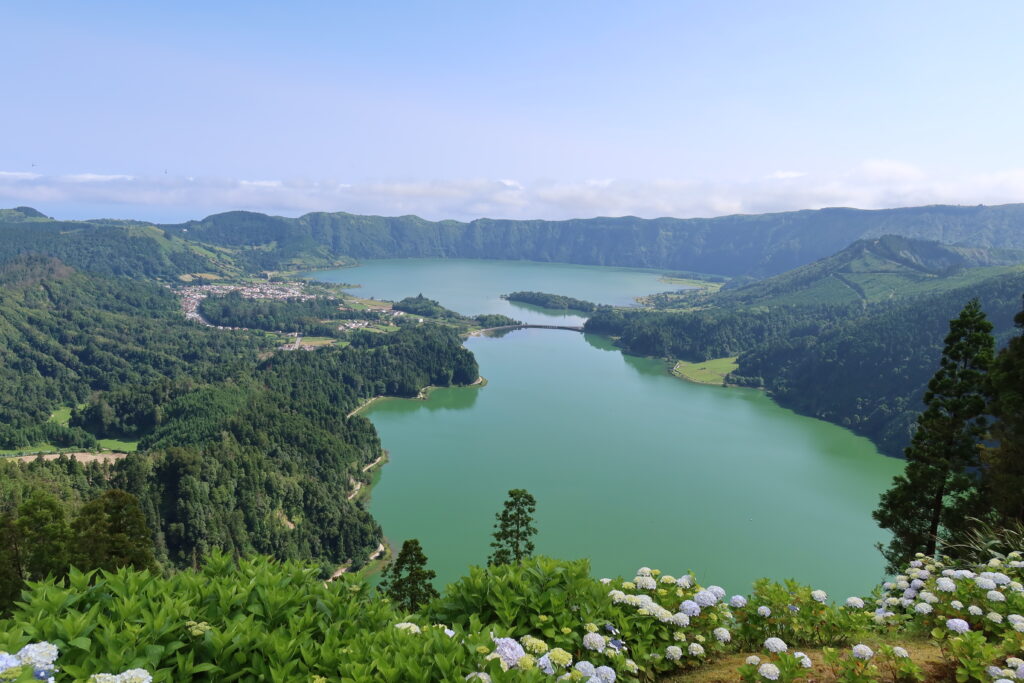
A caldera is formed when lava drains from inside a volcano and the summit collapses inwards (as opposed to a crater which is formed by an explosive movement outwards). It is thought that the caldera of Sete Cidades was formed around 22,000 years ago. It’s 5km wide and 400m deep and is home to Sete Cidades Lagoa (‘lake’) which is made up of two connected lakes. Lagoa Verde (Green Lake) and Lagoa Azul (Blue Lake) cover around 4.5km² between them. The lakes appear different colours (at times!) due to their depth and algae content.
The lakes of Sete Cidades are one of the most photographed things on the whole island and we did our part to keep that being the case! Seeing the difference in colour very much depended on the sky above. We didn’t manage to capture this difference in photos! Before heading down we had a quick look at the abandoned Monte Palace Hotel. We didn’t have as long as we’d have liked to explore here because we were running a bit late.
We followed the winding road down to the water. On the way we were treated to occasional glimpses of the most amazing views through the Japanese Cedar forest. The road went back on itself multiple times in order to keep the gradient manageable. It felt like we spent half of the time looking at where we’d been (including distant views of the Monte Palace Hotel).
Once we had parked the car we met our guide, apologised for being so late and started our guided bicycle tour of the lakes. This was first time I’d been on a bike since my teens but it was exactly like the saying says! The ride was shorter than it would have been if we’d arrived on time but it was still worthwhile. We saw so much life both in and out of the water and the views were amazing.
Our guide told us the local myth/legend about how the two different coloured lakes came to be. Years ago a beautiful princess with blue eyes lived in the parish of Sete Cidades. The princess was kind, friendly and loved nature. She ran away from the kingdom a few times to be closer to nature and during these visits the the great outdoors she stumbled upon a shepherd with green eyes.
The princess and the shepherd fell in love after a few meetings. When the king heard the news he forbade their relationship as she was to be married to a prince from a neighbouring kingdom. The two lovers met one last time to commiserate and cried together. Their tears filling the valley and formed a blue lake with the princesses’ tears and a green lake made up of the shepherd’s. The blue lake was bigger because she cried more for him than he did for her!
Sitting on the grass on the banks of Lagoa Azul while eating lunch really helped us to comprehend how big the caldera was – and how big the eruptions must have been to form it. Luckily it was soon time for our next activity to distract us from thinking anymore!
We got lifejackets on (mandatory) and got into a kayak, setting off from the blue lake under the bridge and into the green lake. It was great to see the inside of the caldera from water level. We actually spent some time just bobbing around on the water taking the views in. The abandoned hotel where we had started the day seemed like such a long way up. There were trees hanging on to what looked like impossibly steep angles all around the inner slope of the caldera.
Towards the middle of the green lake is a part of the seismic monitoring network. This provided a refuge for some common terns which were fun to watch from up close. We also saw man fishing, and actually catching a decent size zander as we kayaked under the bridge below him!
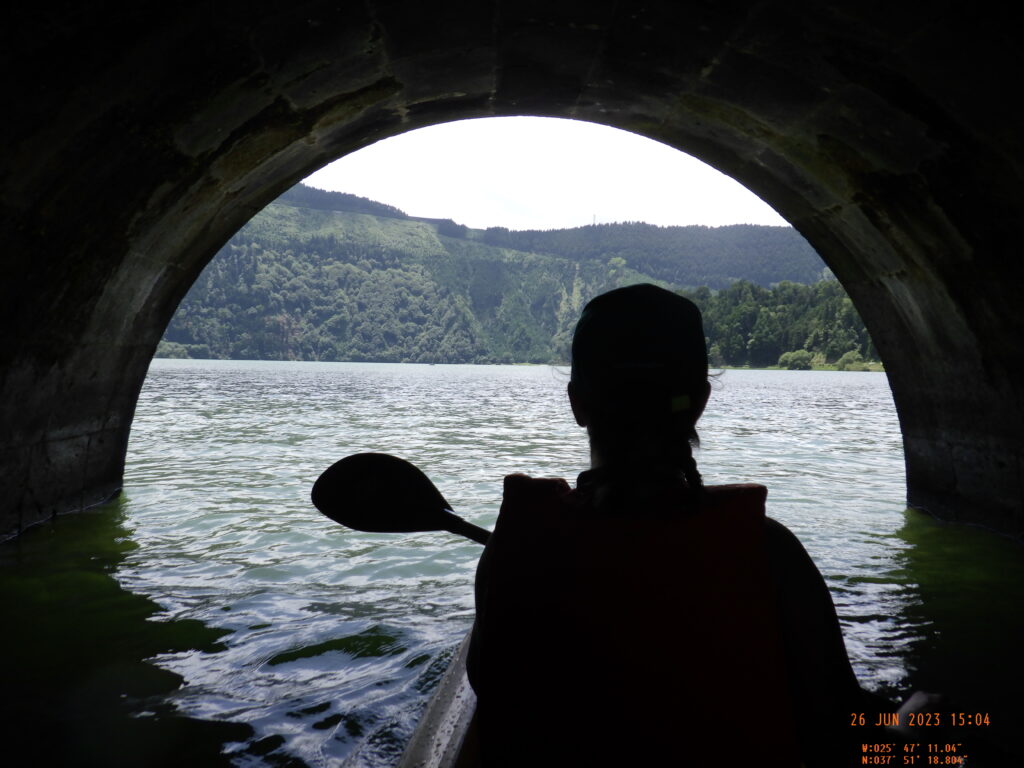
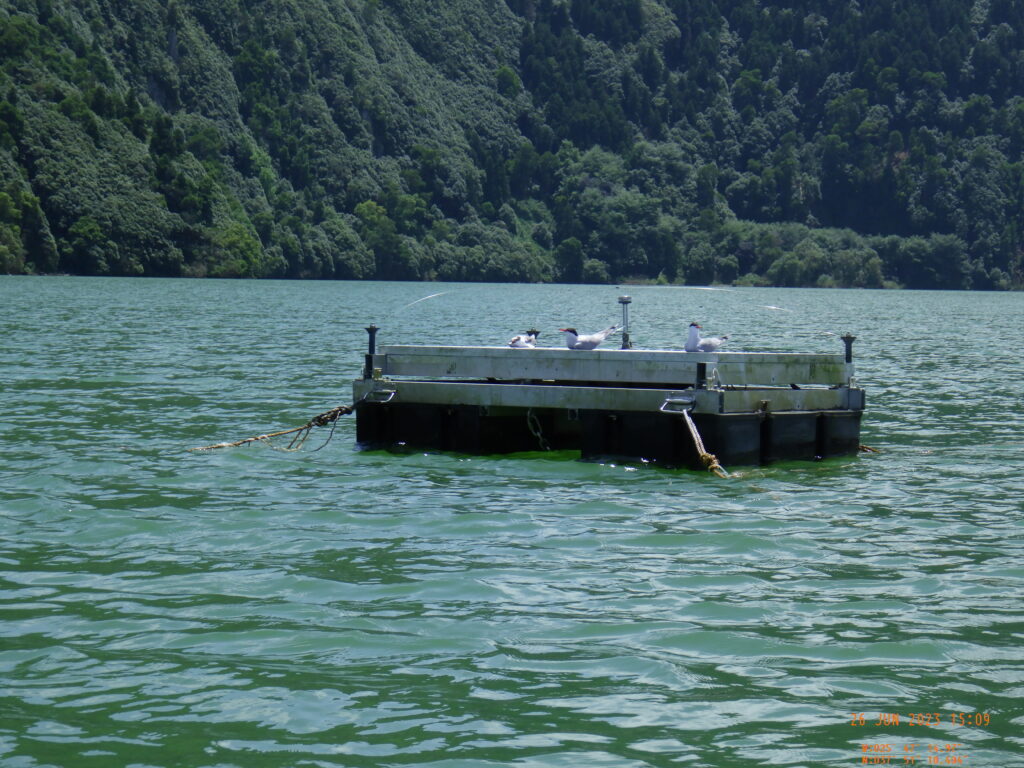
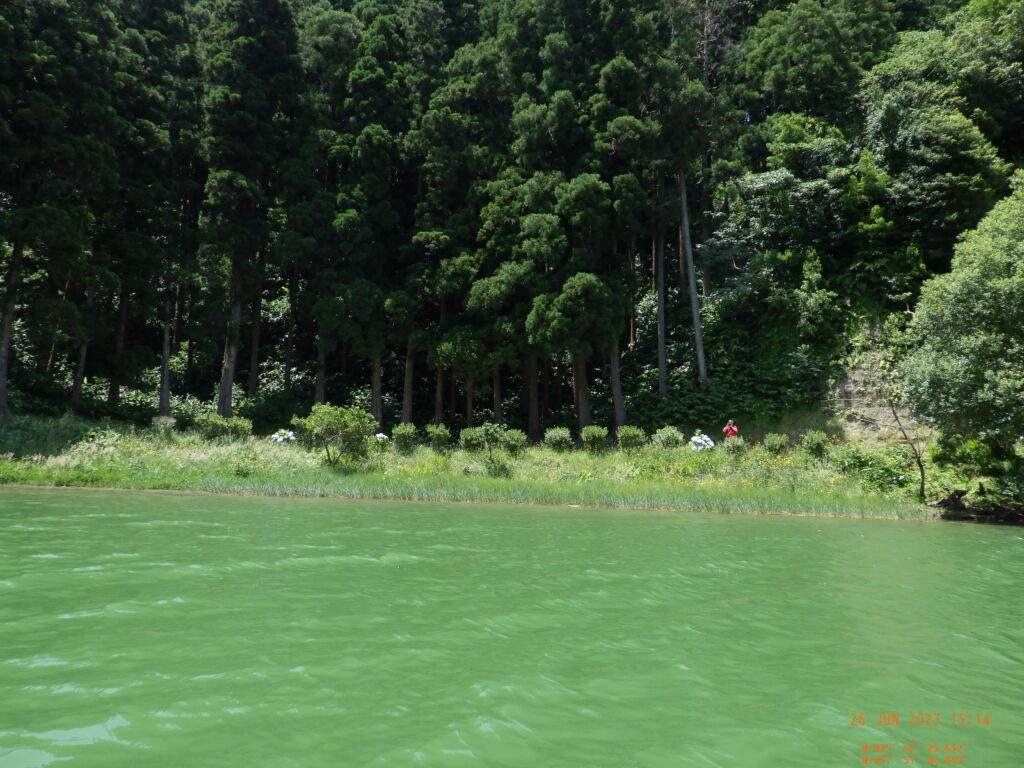
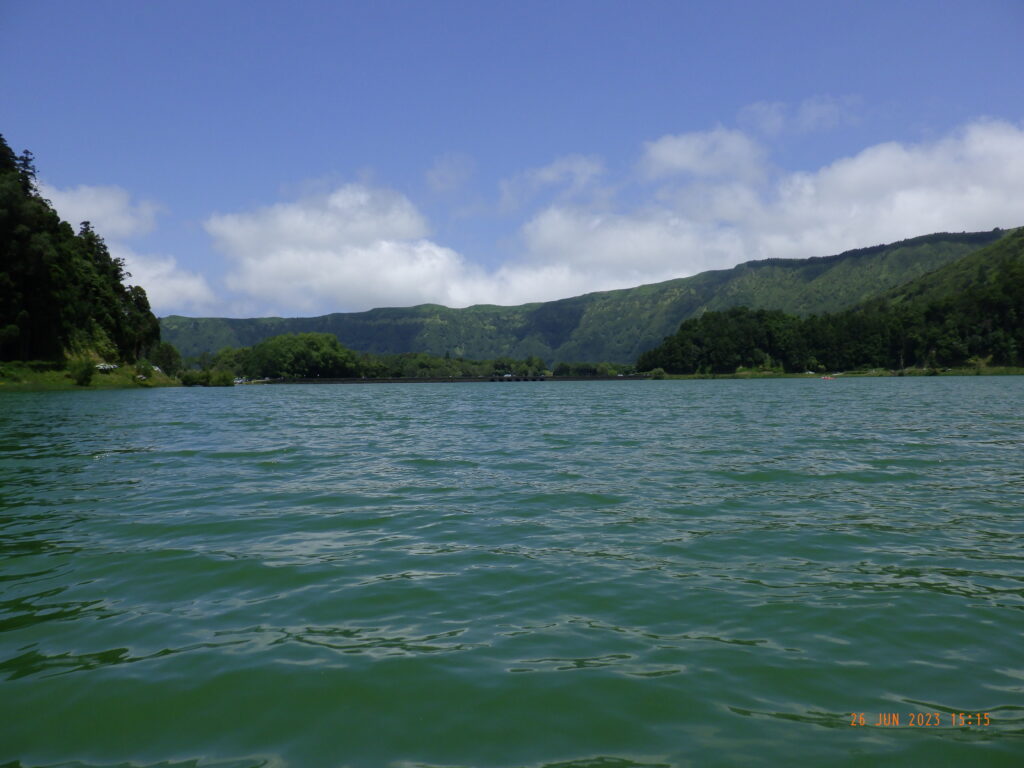
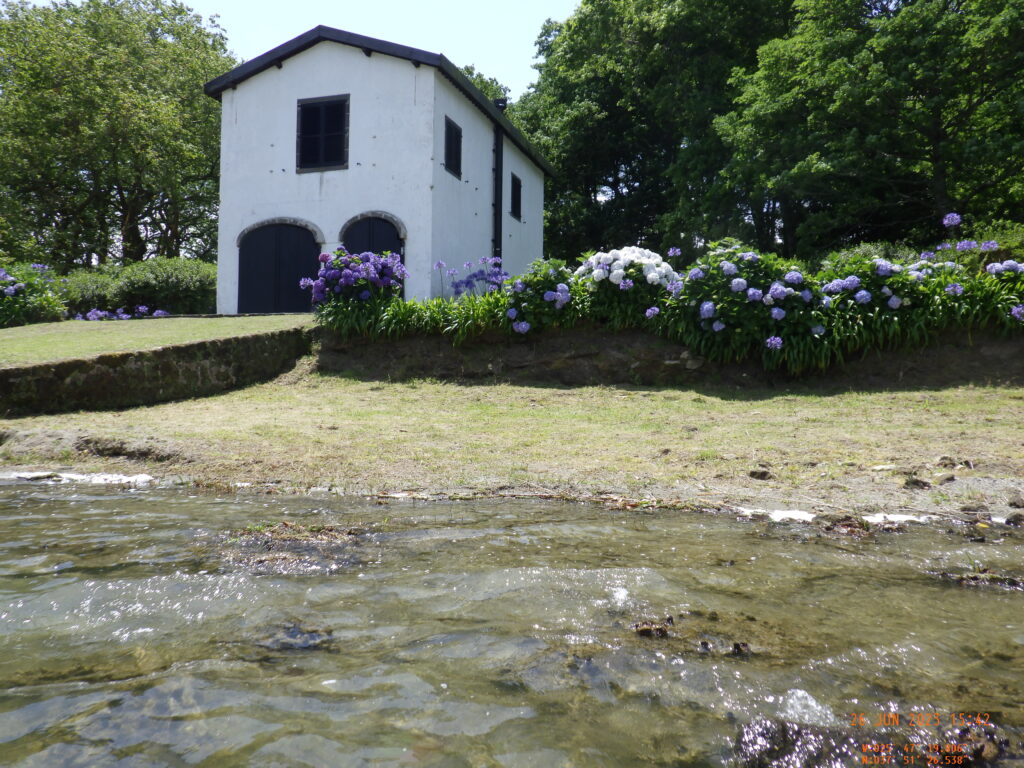
Leaving Sete Cidades we headed towards the wild west coast. Our first stop was at Miradouro da Ilha Sabrina. This offered views of the lava flow that contained the thermal pools of Ferraria as well as distant views of Farol da Ferraria (‘Ferraria lighthouse’).
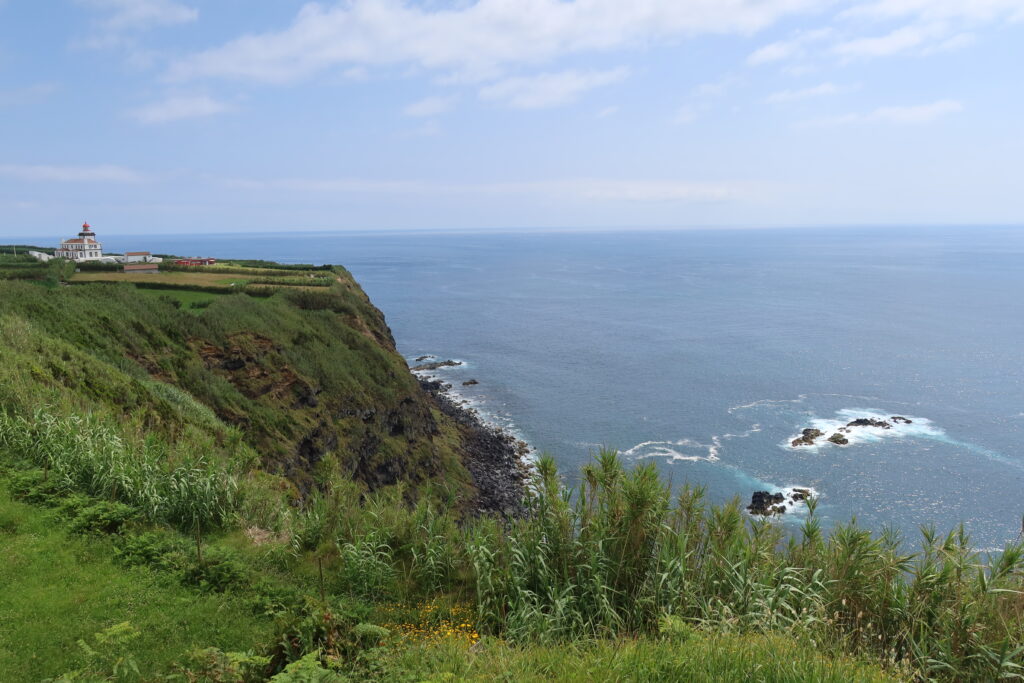
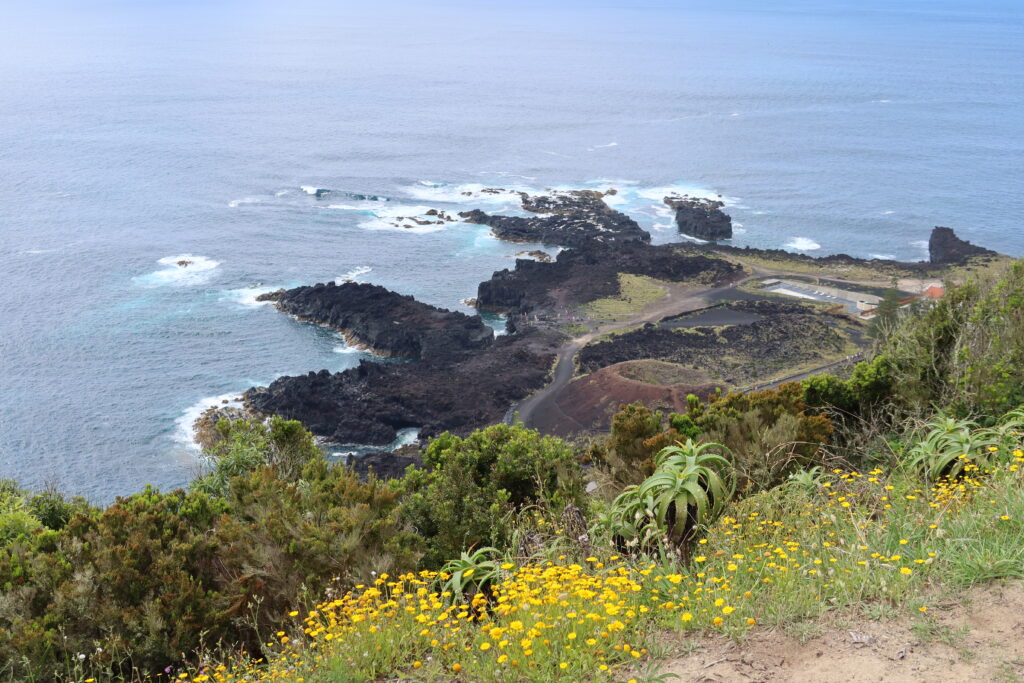
From the viewpoint we followed a crazy steep, narrow switchback road down to Ponta Ferraria (‘Ferraria Point’). At low tide you could climb into a natural pool and bathe at a perfect temperature with geothermally heated water flowing into the pool behind you and the ocean flowing in from in front. Interestingly, the hot water comes from the same place as we just had. It is heated by underwater vents from the Sete Cidades caldera.
Rather than jumping into the water we explored the Ferraria lava field. Even at high tide the cliffs were impressive, and it was awesome to see the caves and arches beneath us. The power of the water was incredible. There were times when the crashing waves felt like they made the rocks we were stood on vibrate as they hit, then there was the impressive thud and finally the spray everywhere!
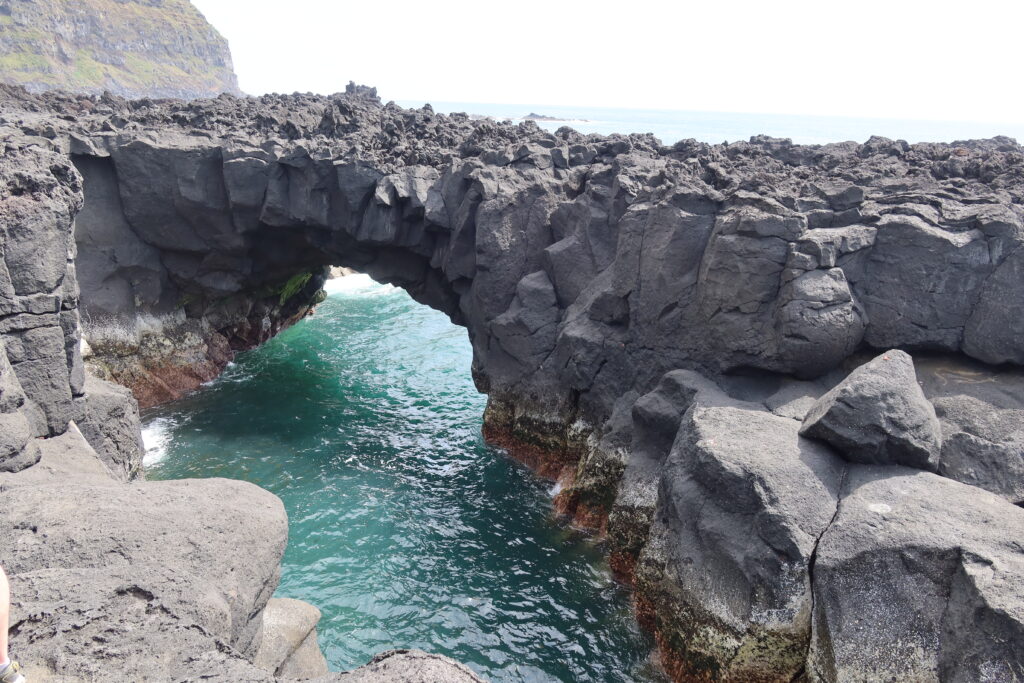
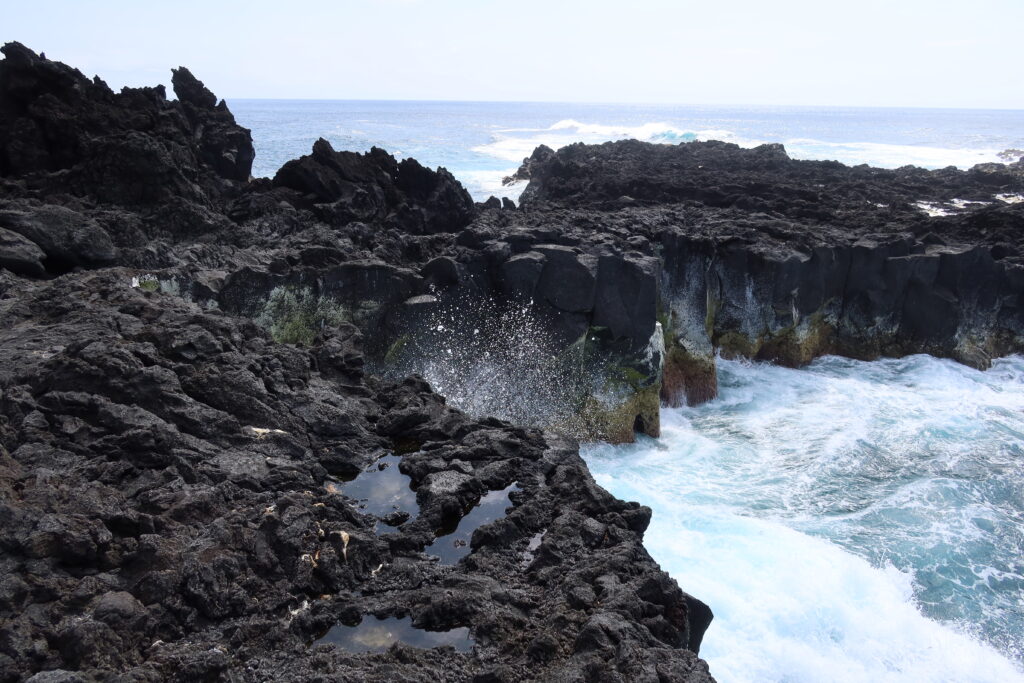
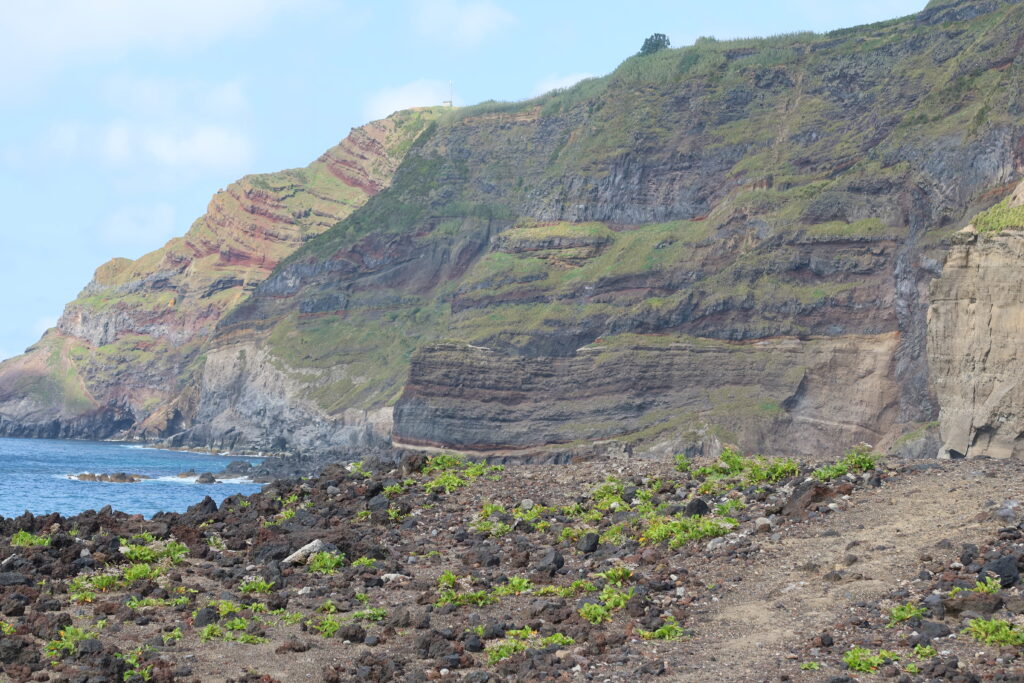
We continued round the coast to Ponta dos Mosteiros stopping for a beer (non-alcoholic for driver Gill!) at ‘Seaside Vibez’. We saw some natural pools (not heated this time), a black sand beach and some fishermen balancing on the cliffs.
Mosteiros is famous for the Ilhéus dos Mosteiros (the ‘Islets of the Monasteries’). These are eroded remains of a coastal caldera. These islets are named this because the early settlers thought that they looked like a monastery.
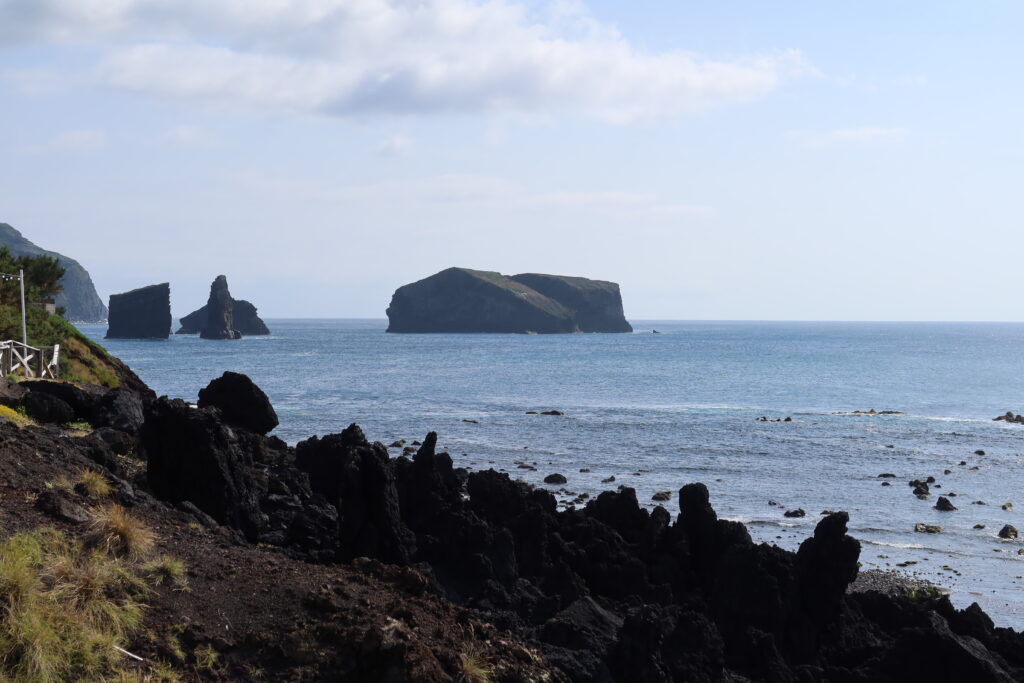
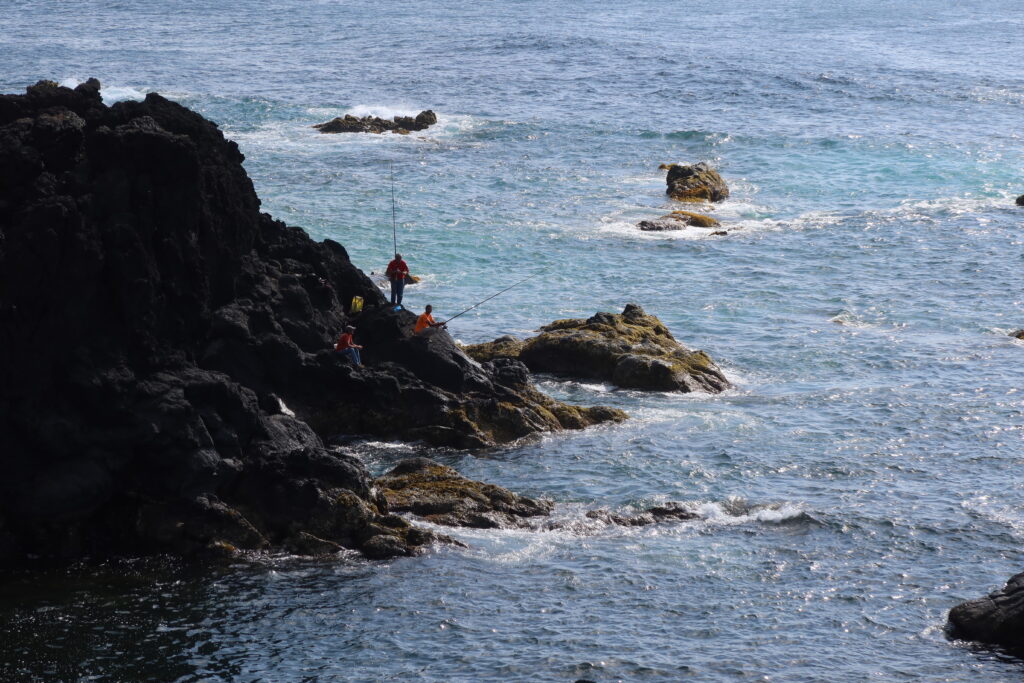
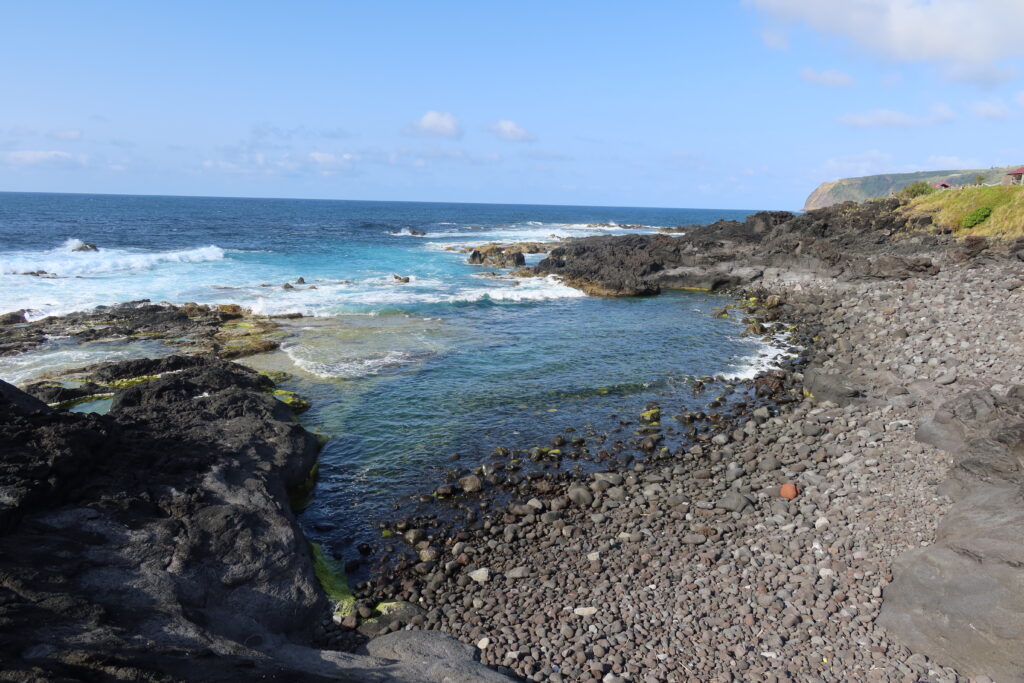
There weren’t many dining options on this side of the island so we went to Restaurante Ilhéu which was one of the only (if not THE only) options. It was busy (as you’d expect with so little competition) but the food was lovely. It was fresh, and just what we needed before the drive back to the city.
We’d seen a lot online about how difficult parking was in Ponta Delgada so were expecting the worst. It was nowhere near as bad as was made out which may have been just good luck on our part! We managed to find a space close to where we were staying pretty easily both times we needed to. We visited out of the traditional school holiday dates but it was still a peak time for tourism. From what we saw there is no need to panic about being able to park.
day 4 – northeast, north and centre
Setting off after breakfast we embarked on a long drive around the coast in the morning. This was predominantly a car tour with some stops for miradouros on the way. The aim of this trip was to get us to Caldeira Velha ready for our booking for the heated pools. Along the way we had more than our fair share of amazing roads, views that just seemed made up, volcanic cones, calderas, steaming geothermal vents, wildflowers, waterfalls, rivers, lakes. It was a great way to see loads of the island!
We drove as far along the south coast as we could, up the east coast and along the majority of the north coast too. We stopped at Miradouro do Pôr-do-Sol (‘sunset viewpoint’), Miradouro da Ponta da Madrugada and anywhere else where we safely could in order to take pictures.
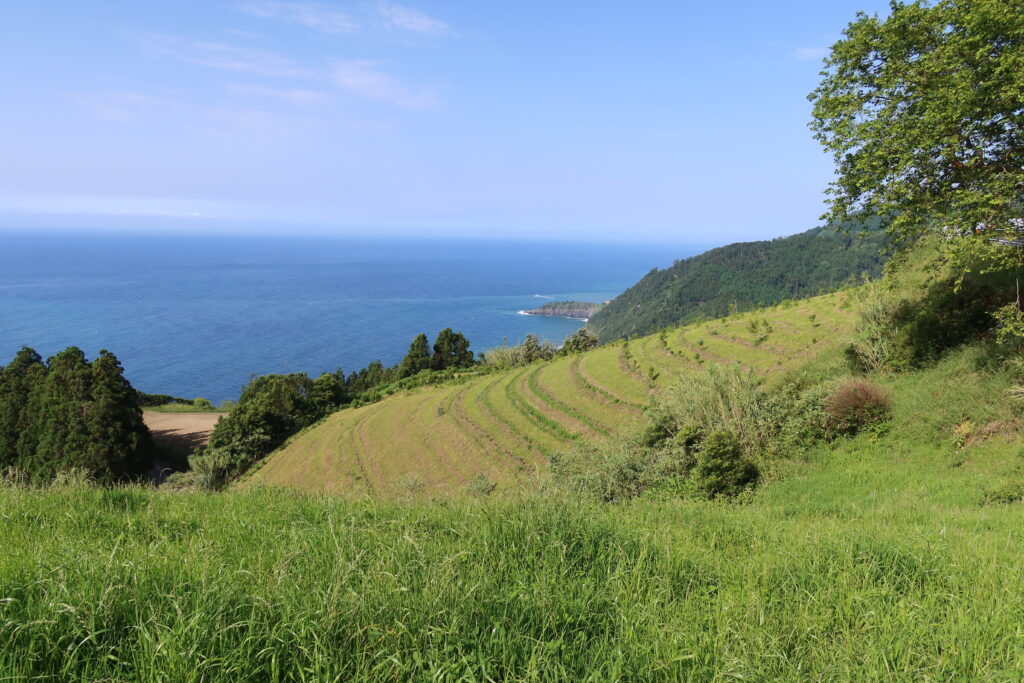
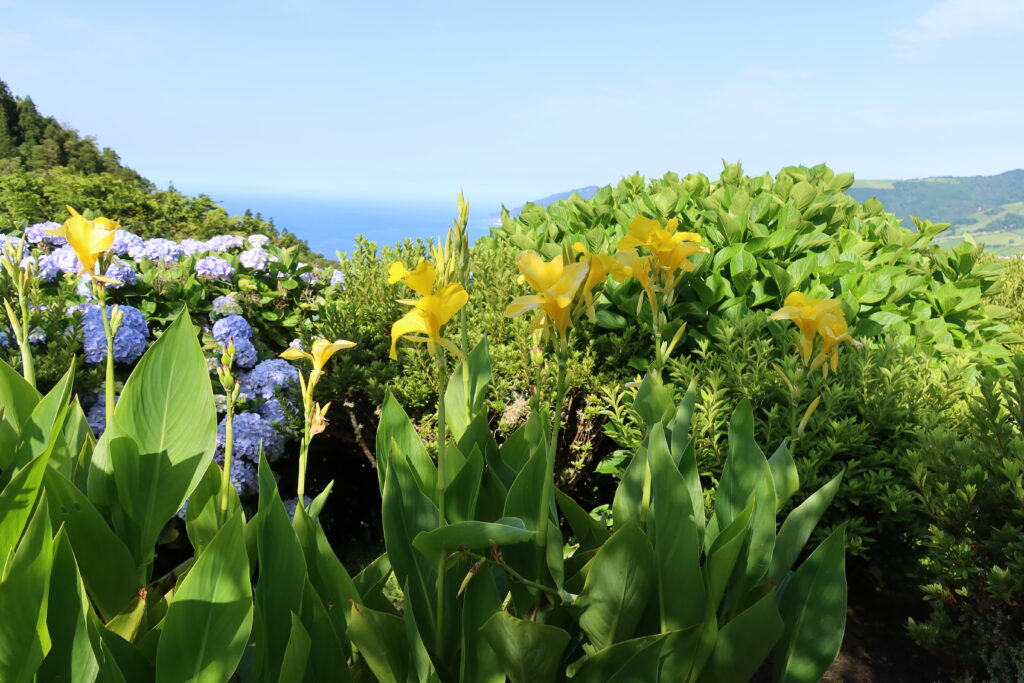
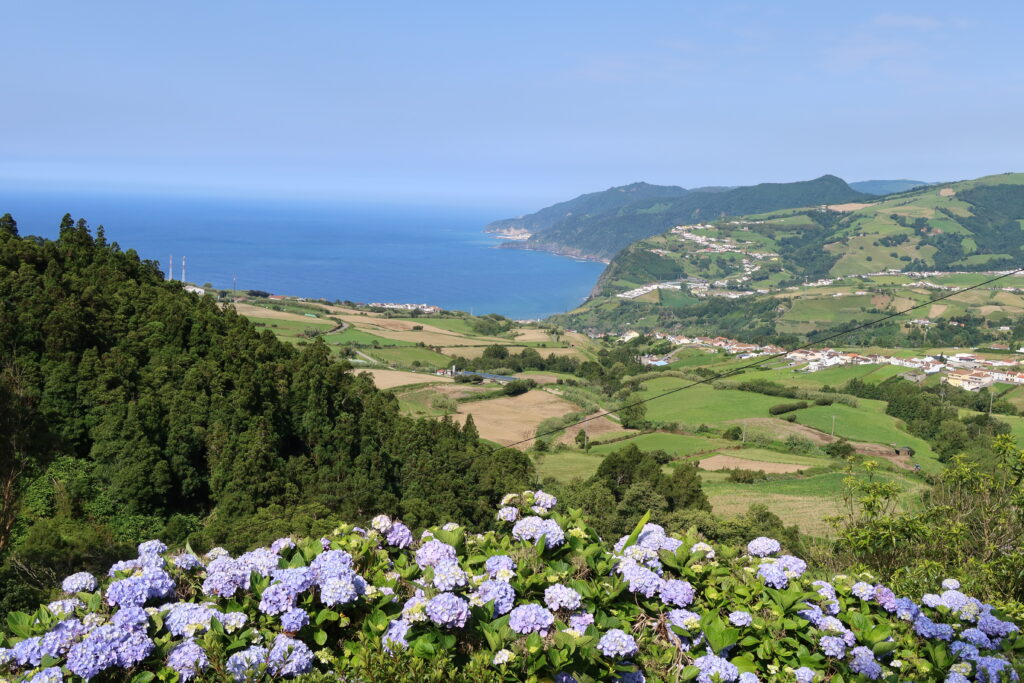
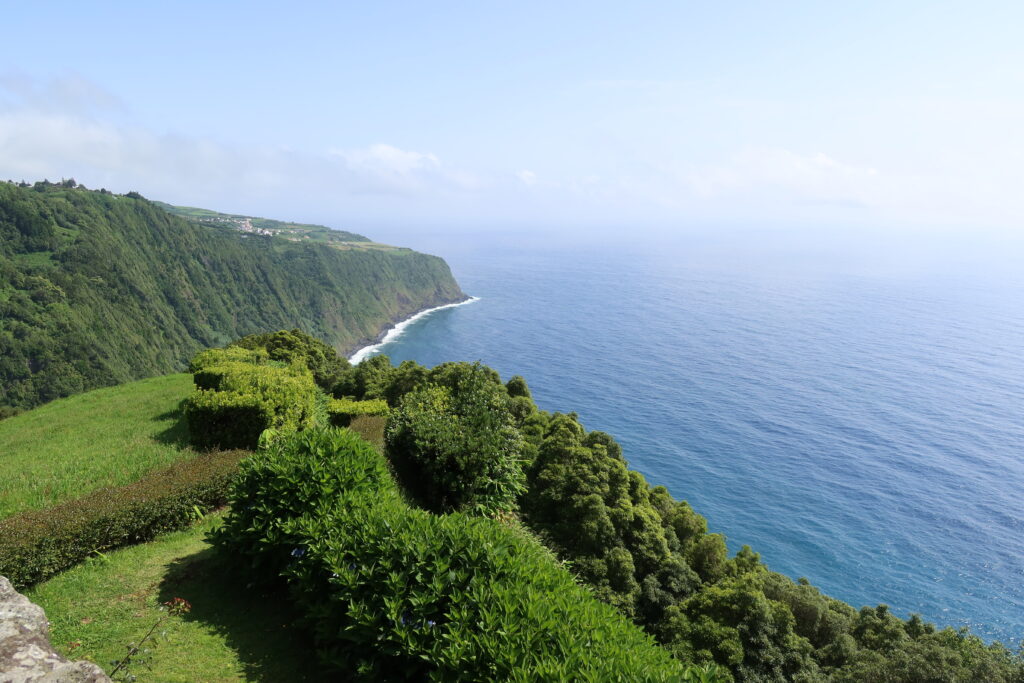
As soon as we arrived at the carpark for Caldeira Velha I was pleased we had booked tickets. It was so busy! Caldeira Velha has hot spring fed pools and a warm waterfall all set within tropical rainforest. It was like entering Jurassic Park! We stood underneath the warm waterfall and explored the different temperature pools before having a stroll around the site.
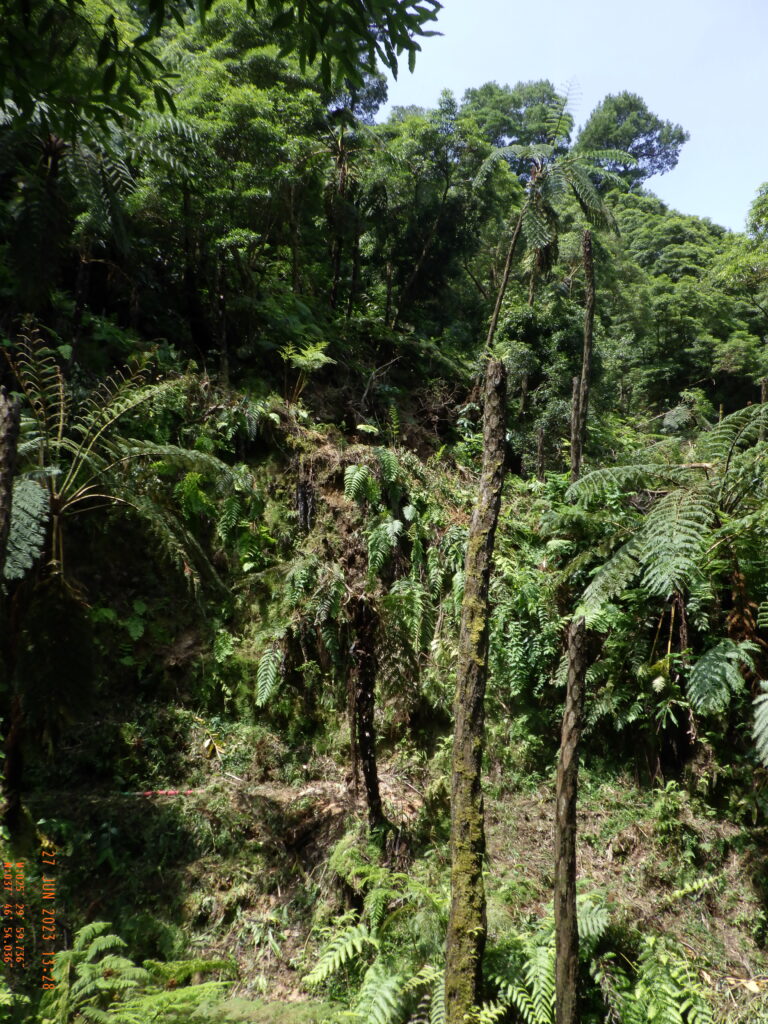
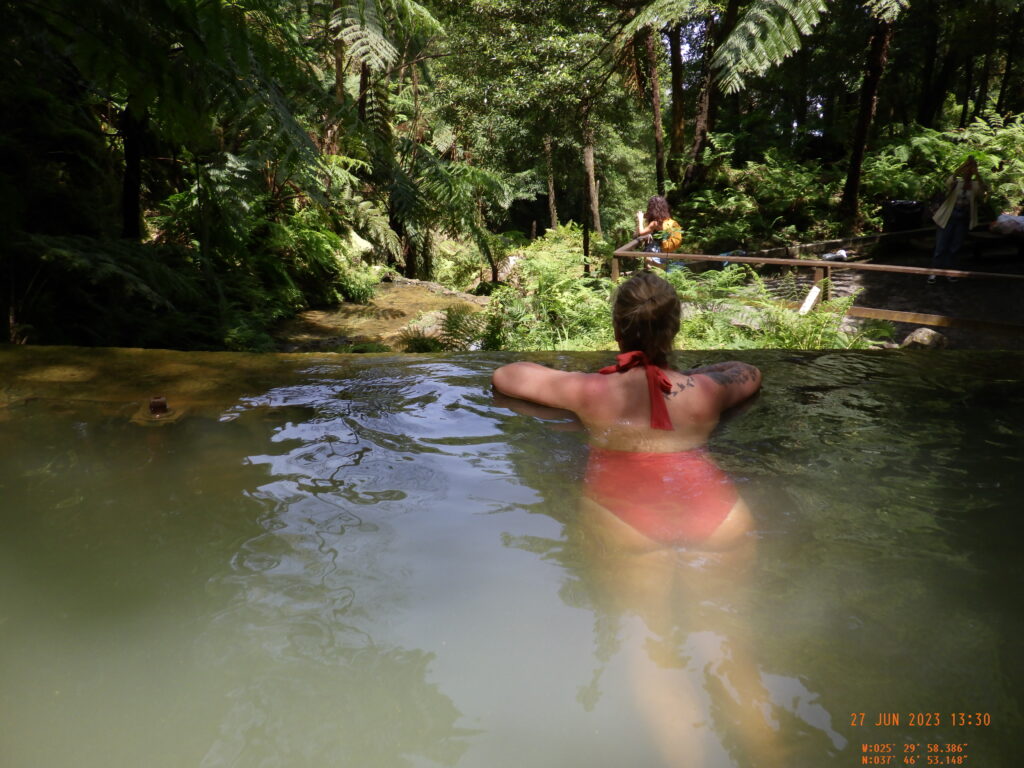
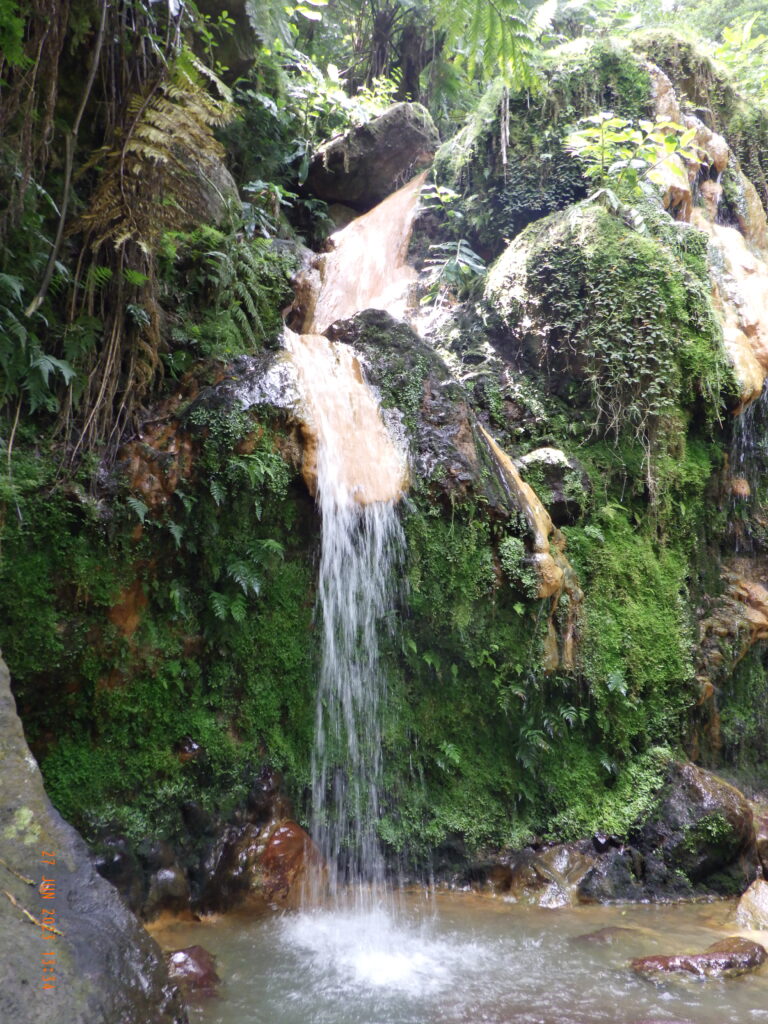
Whilst pleased that we had booked tickets, the available times did mean that we ended up retracing our steps slightly in order to see everything that we wanted to. This was a small price to pay (especially with Gill’s fuel deal with the car hire people!).
Next up was Ribeira Grande where we stopped for lunch overlooking the sea at Alabote restaurant. We briefly explored the town, walking through the Jardin Municipal de Ribeira Grande (‘municipal gardens’) alongside the riverbed to take photos of the Ponte dos Oito Arcos (‘eight arches bridge’). Ponte dos Oito Arcos was part of a railroad project that was started to connect Ponta Delgada with Furnas. This project was abandoned in the 1920s and the bridge repurposed for travel by road.
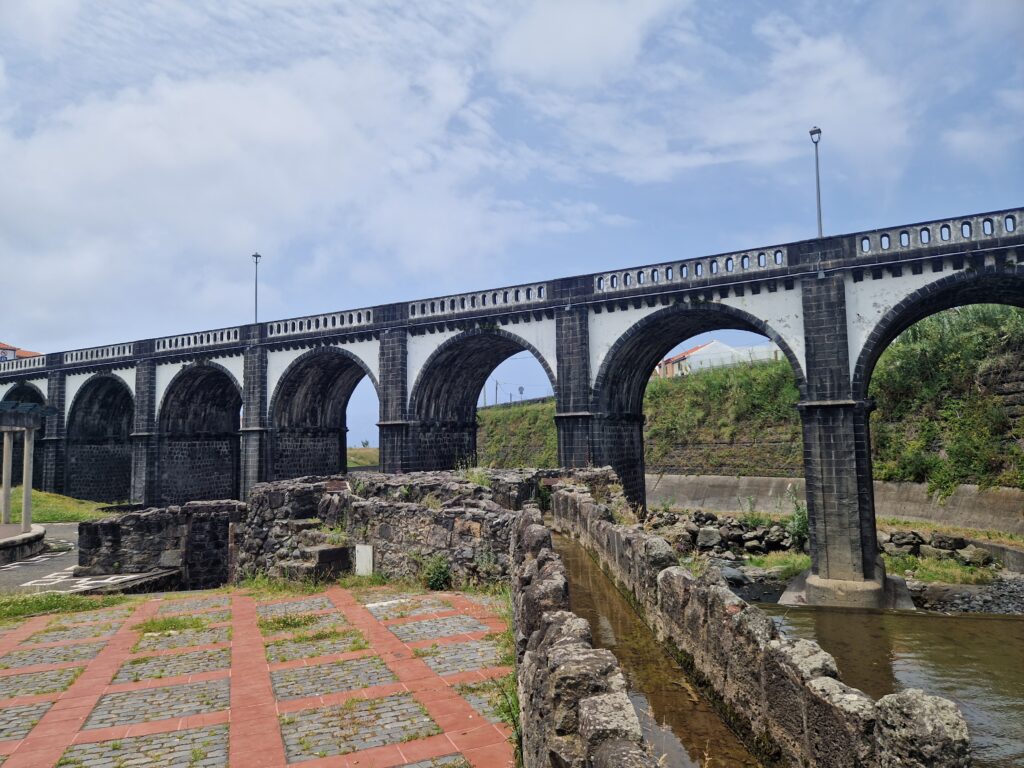
In Ribeira Grande we saw a statue of Father Gaspar Frutuoso. Born in 1522 he studied the genealogy of Macaronesia in his manuscript ‘Saudades da Terra’. In here, Father Gaspar recorded detailed historical and geographical descriptions of the Azores, Madeira and the Canaries, as well as referencing Cape Verde.
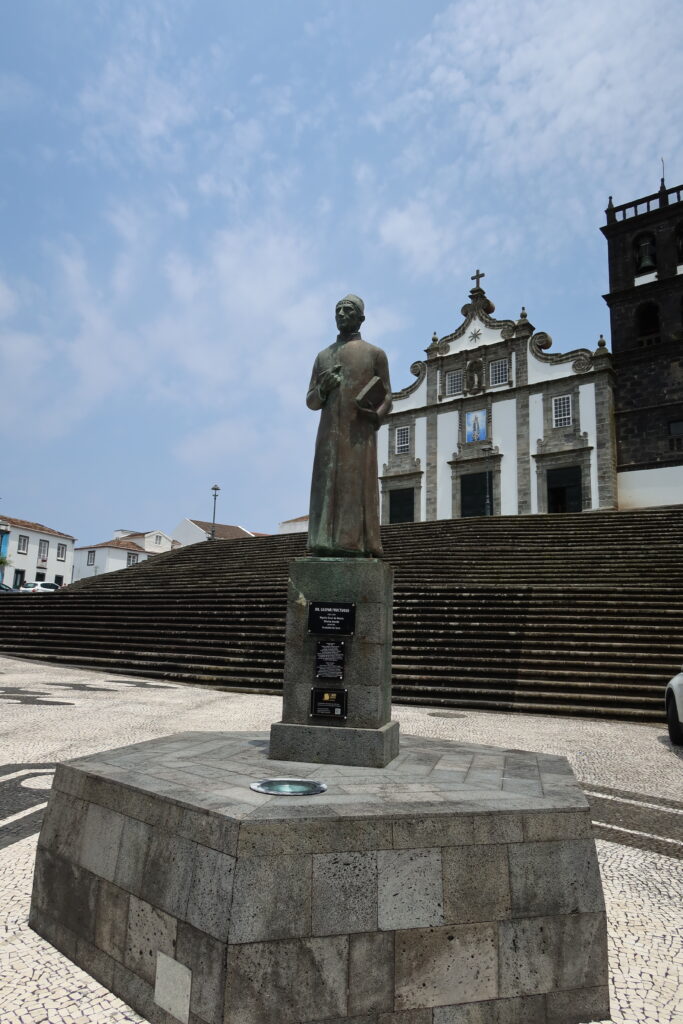
Heading east from Ribeira Grande we had a quick stop at Miradouro de Santa Iria before visiting the Gorreana Tea Plantation. This opened in 1883 and is the oldest operating tea plantation/factory in Europe. We had a stroll through the plantation and stopped for a cup of tea before continuing our journey.
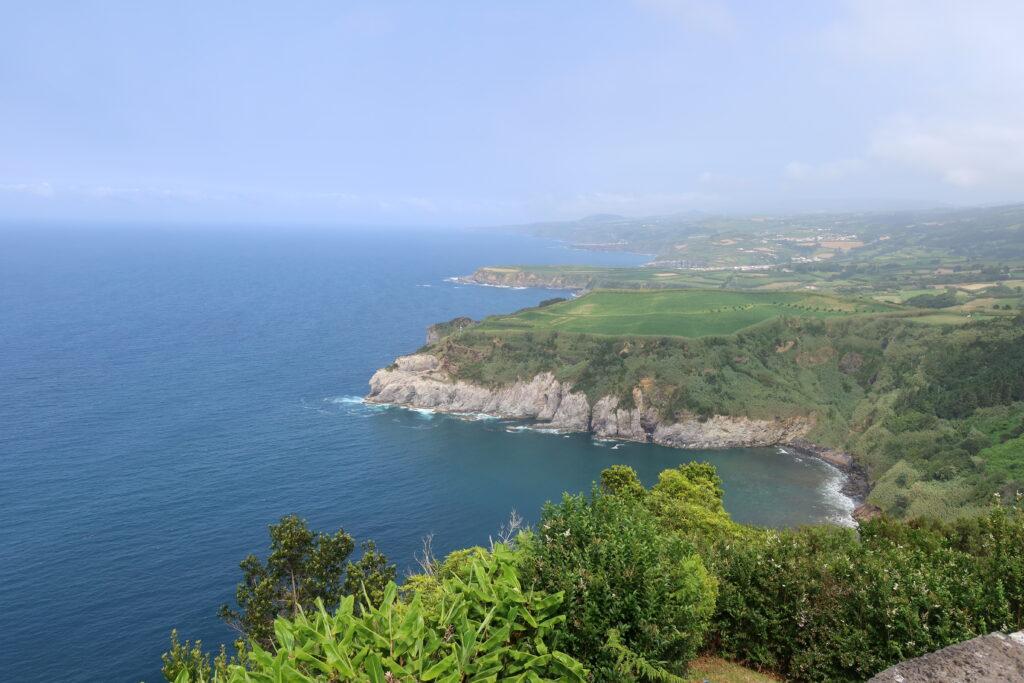
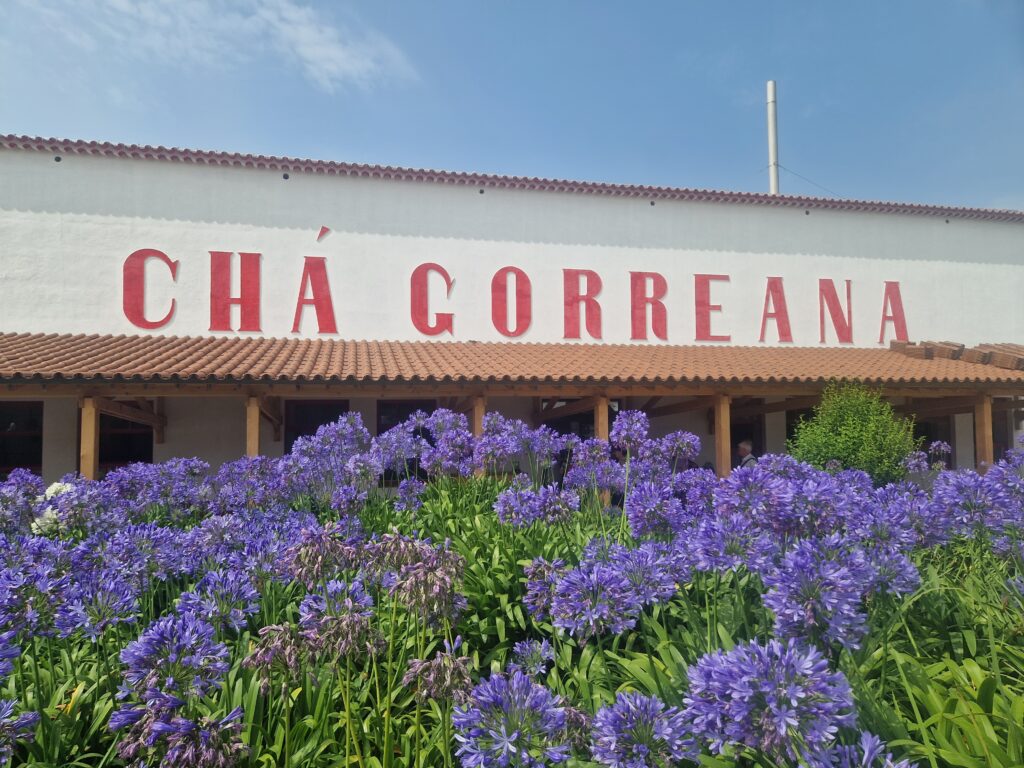
Continuing east, our next stop was Parque Natural da Ribeira dos Caldeirões. This natural park is a protected area and is home to a waterfall and windmills as well as a path that follows the river as it rushes down the valley. It was really nice to walk through the forest here with the sound of the tumbling river as our soundtrack.
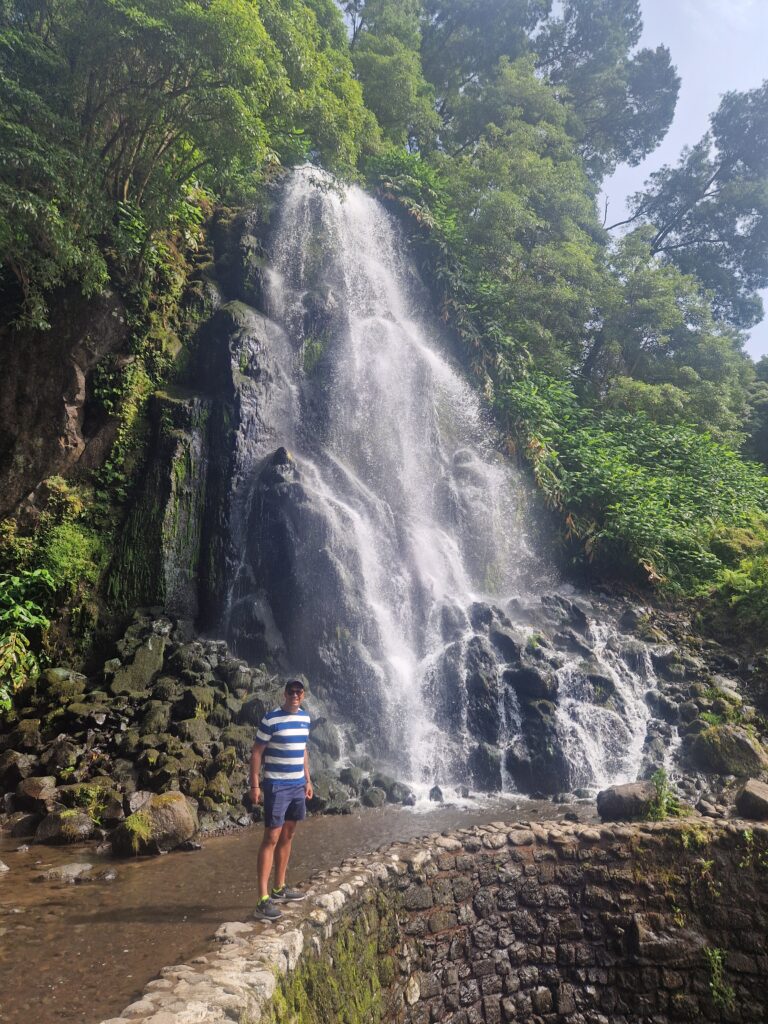
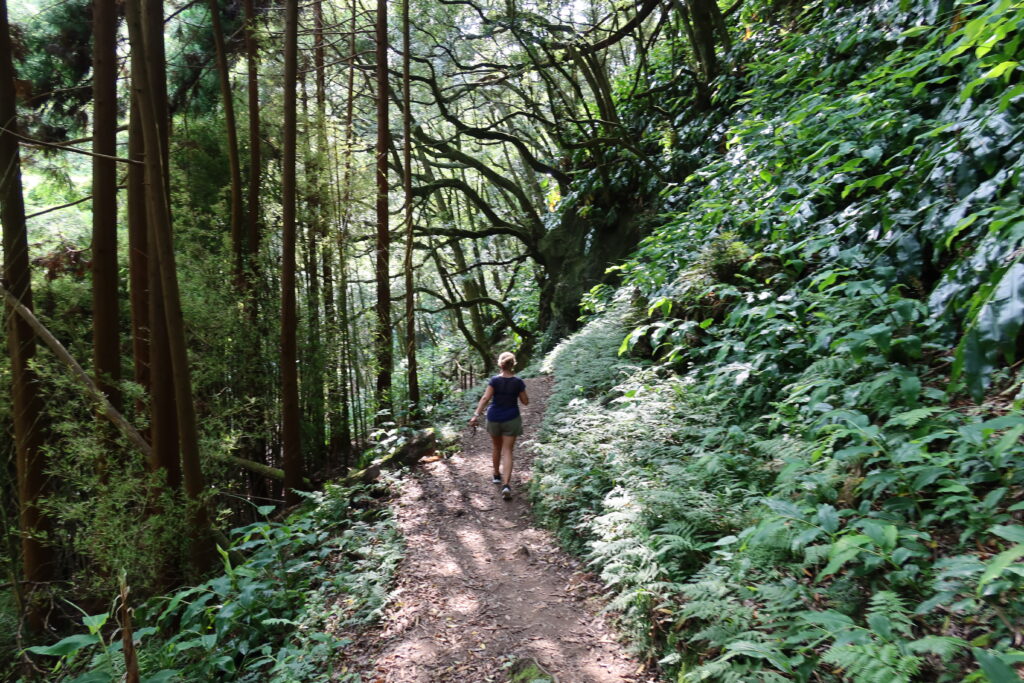
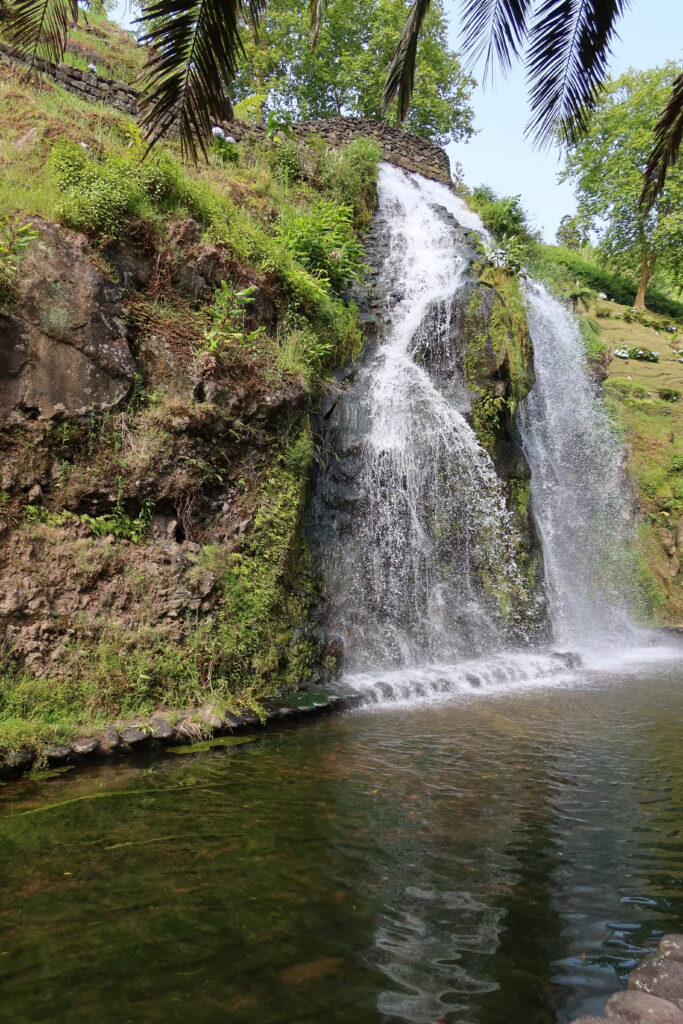
Lagoa do Congro was the penultimate place we saw today. This amazing, hidden crater lake was in the middle of nowhere and we pretty much had the place to ourselves. We crossed stepping stones and rudimentary bridges on the way down to the bottom. The crater lake that was absolutely teeming with life. Congro is one of the most seismically active areas of the island and the crater was formed around 3,900 years ago. The steep sides of the crater are around 100m high which looks really dramatic from both the top and the bottom. Luckily the path winds a long way round to make sure it’s not too steep!
Our last stop was Miradouro do Pico da Barrosa. From here it was a short (but steep) walk to Pico da Barrosa itself, the highest point on the island. The view over Lagoa do Fogo was stunning.
We followed the setting sun down from up high and made our way back to Ponta Delgada where we parked the car and walked back to the B&B. We ate close to where we were staying as it was quite late by the time we had packed as much as we could in our cases and got ready to head out.
day 5 – north coast
After breakfast we checked out of Casa das Palmeiras.. We definitely hadn’t packed light but it wasn’t too hard to carry everything to the car. This reinforces the point I made previously about parking being absolutely fine in Ponta Delgada.
We headed through the narrow winding streets of Ponta Delgada for the last time on an intentional detour in order to see a part of the island that we hadn’t managed to previously. We went to the north coast and visited São Vicente Ferreira, Capelas and the Miradouro das Pedras Negras (‘black cliffs’).
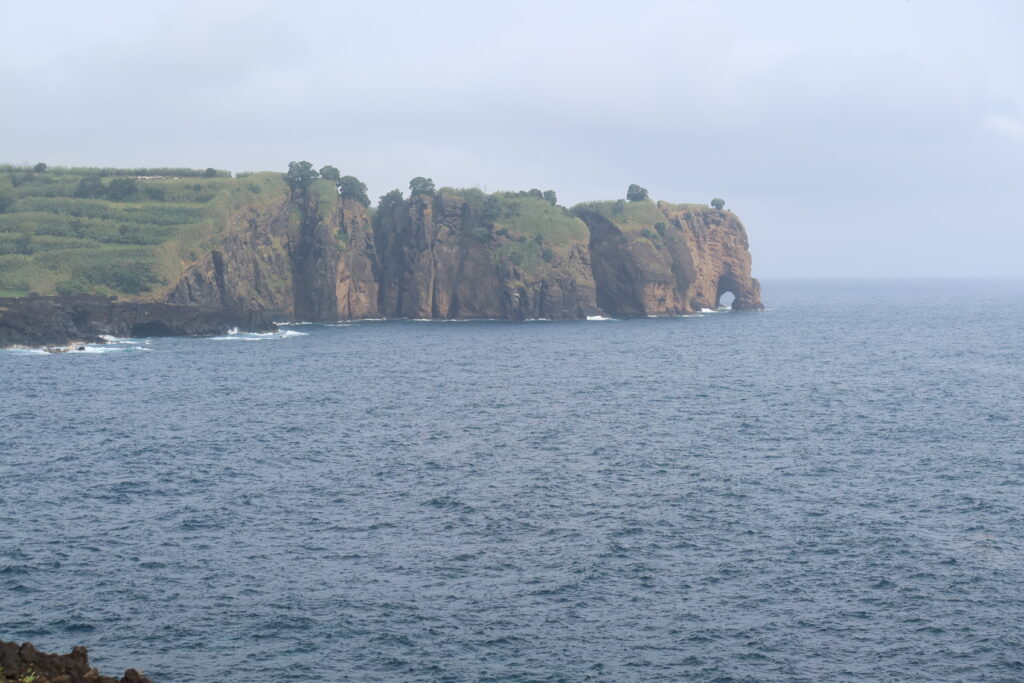
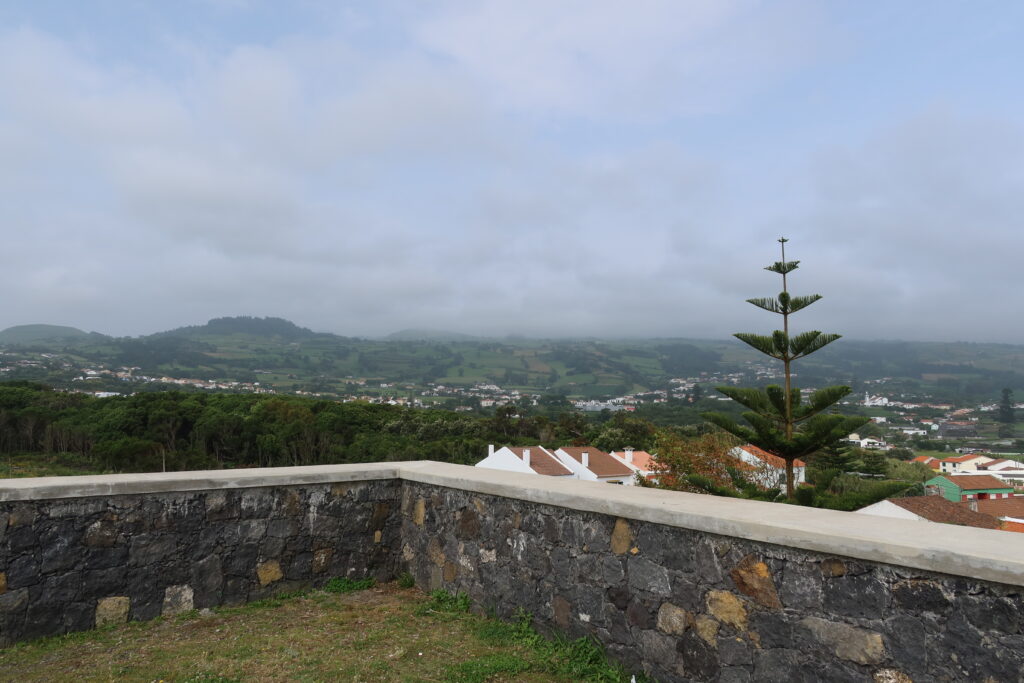
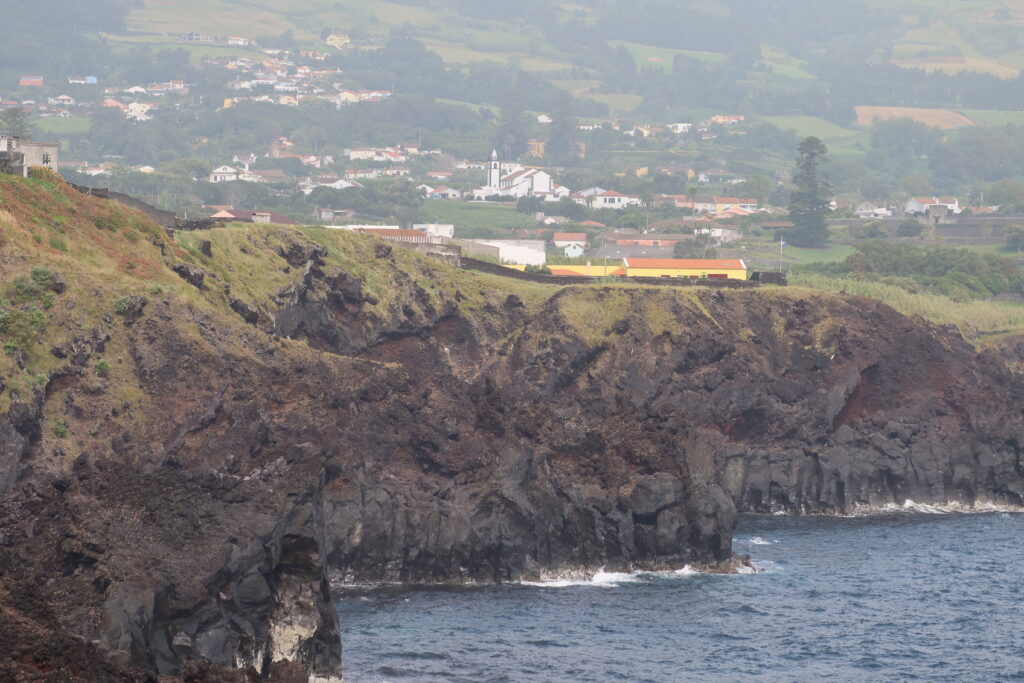
Dropping the hire car at the airport was a lot smoother than collecting it was and we were quickly checked in ready for flight. The plane we flew on was a Bombardier Q400, a lot smaller than we’d used for the international parts of the journey. It was an uneventful flight to Flores, the highlight was spotting Pico peeking out from the clouds!
Our adventures on the island of Flores are available here.

